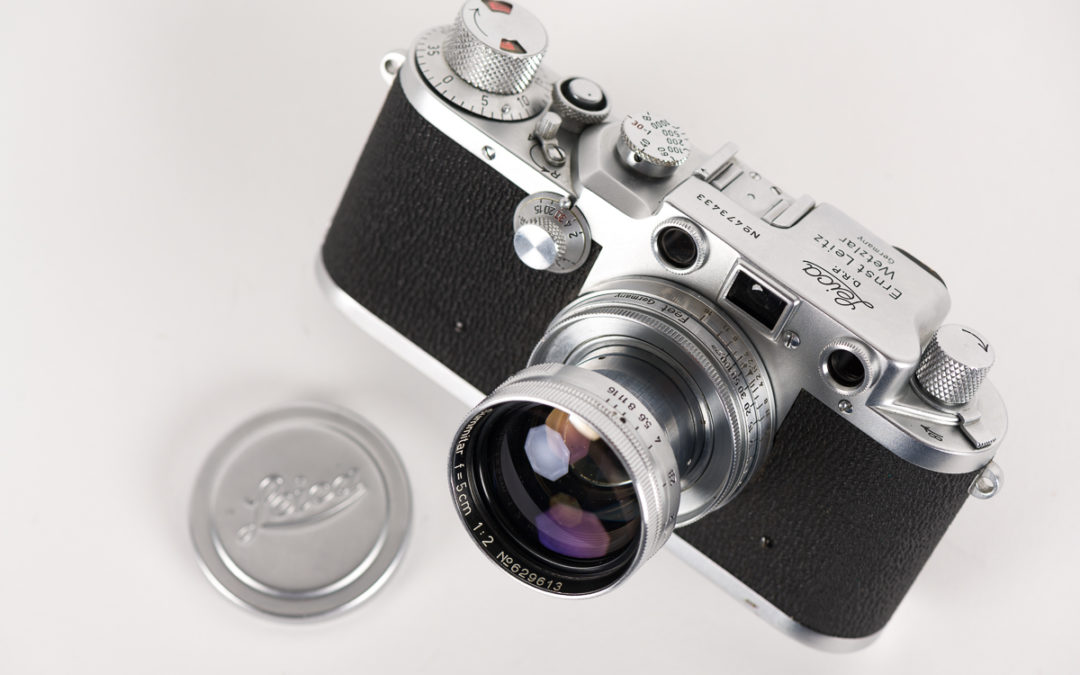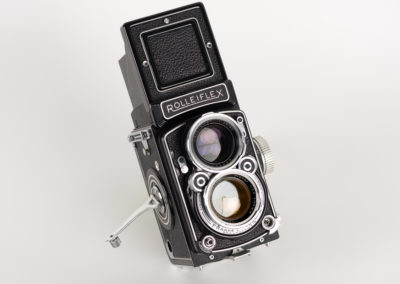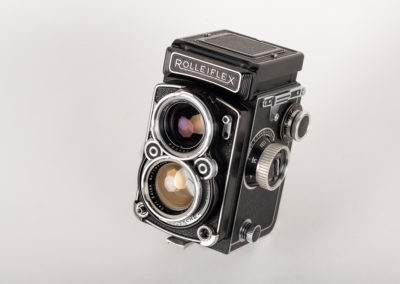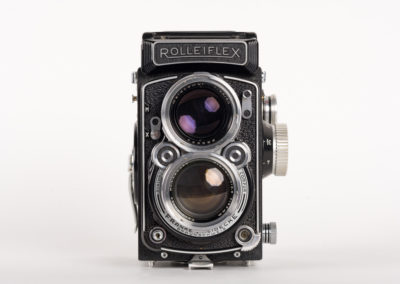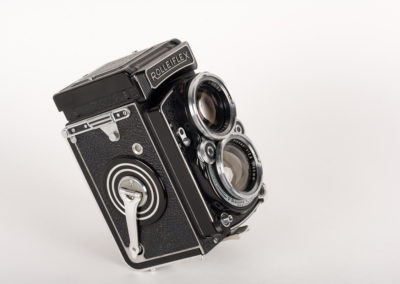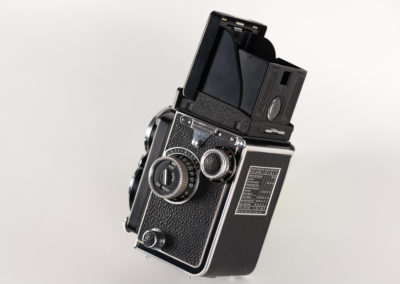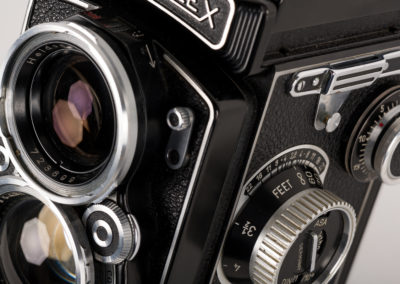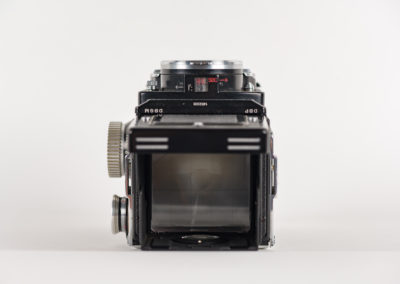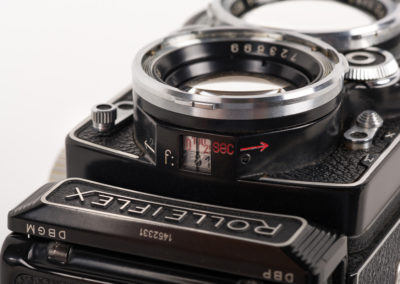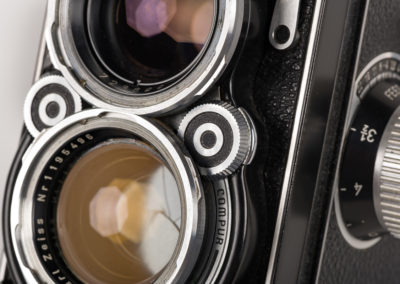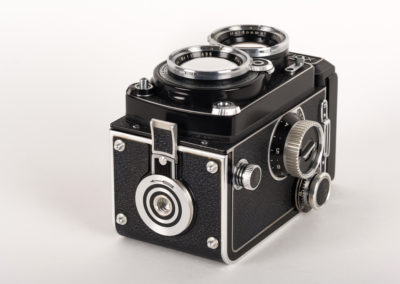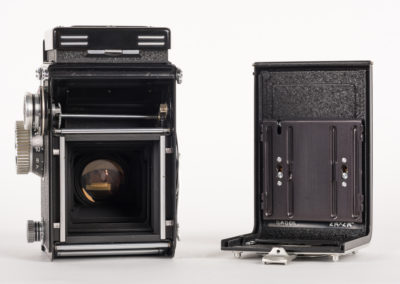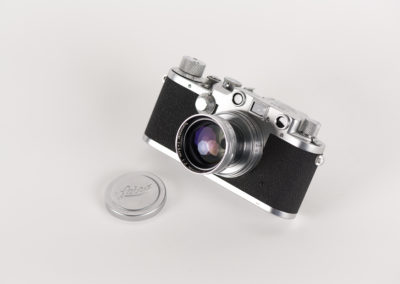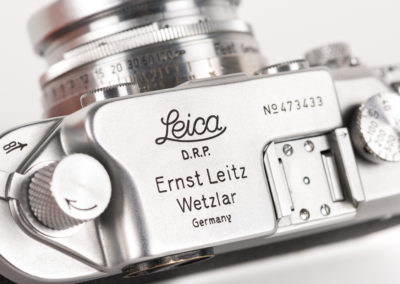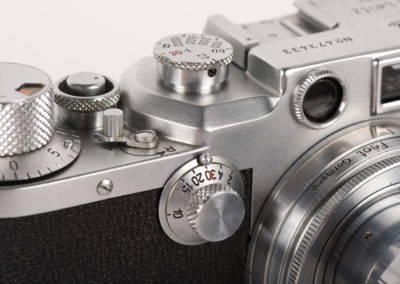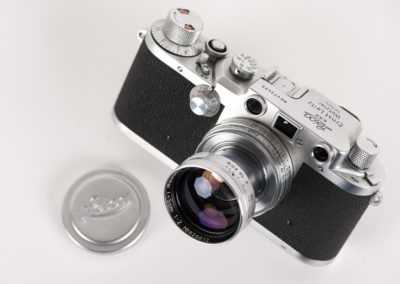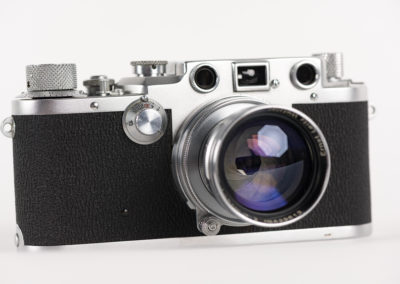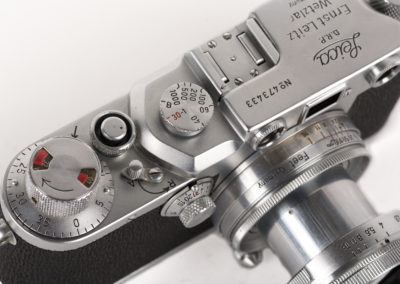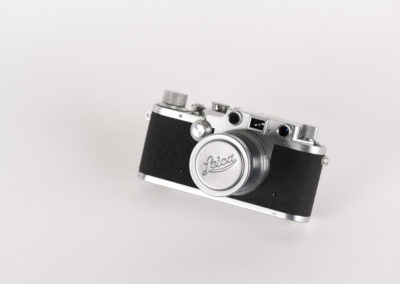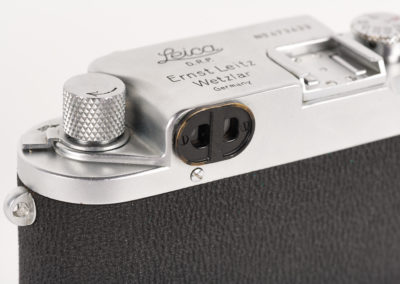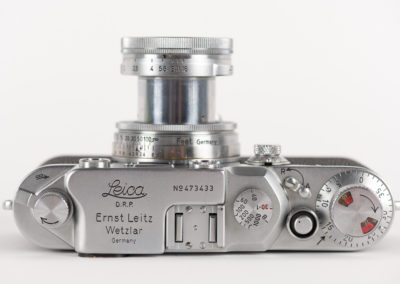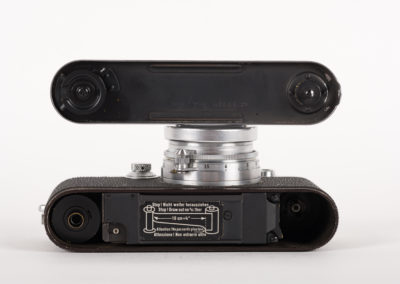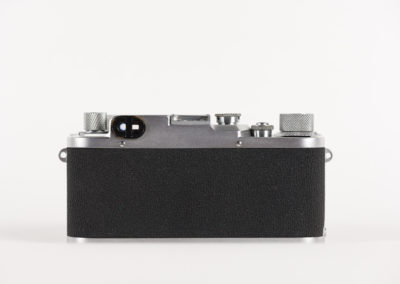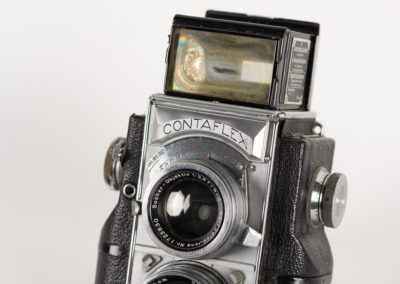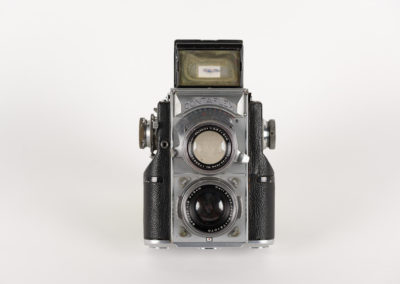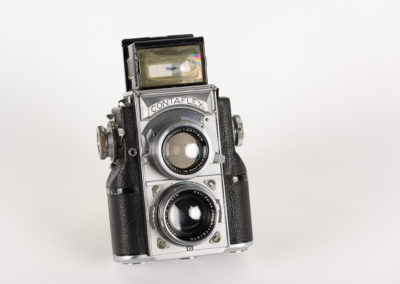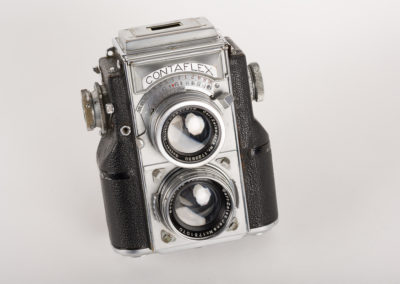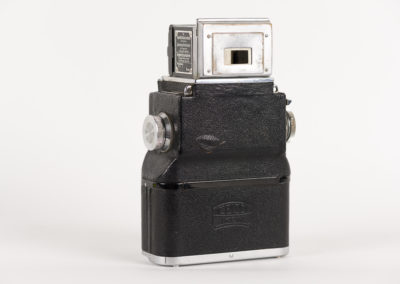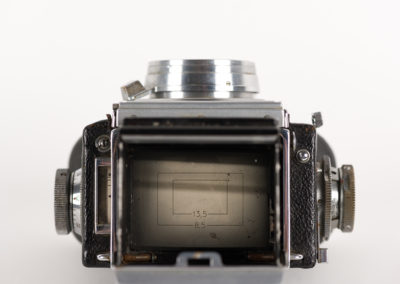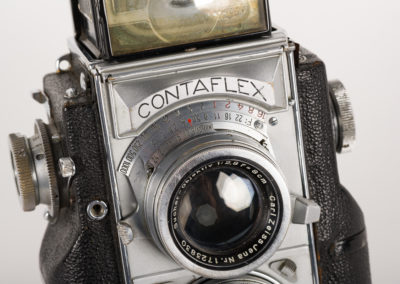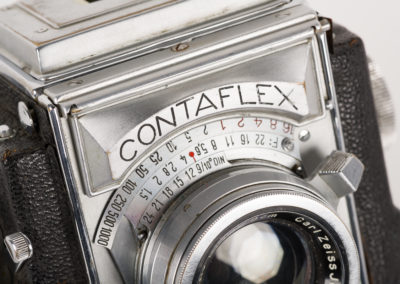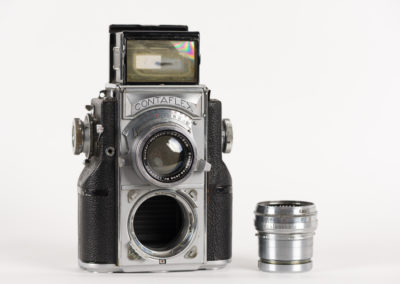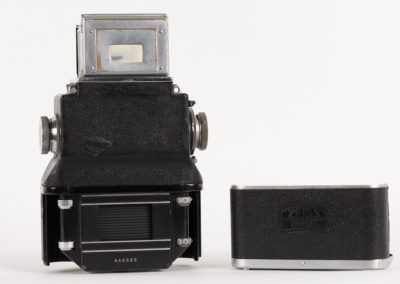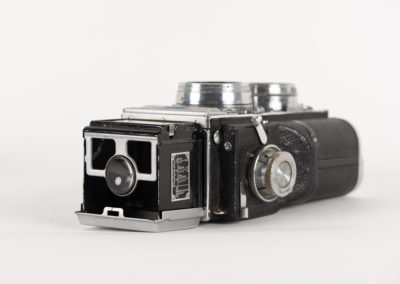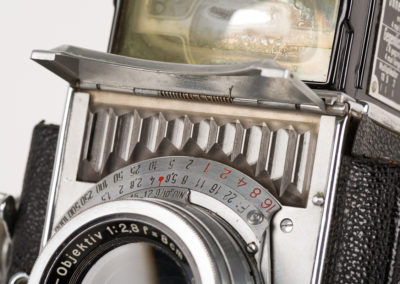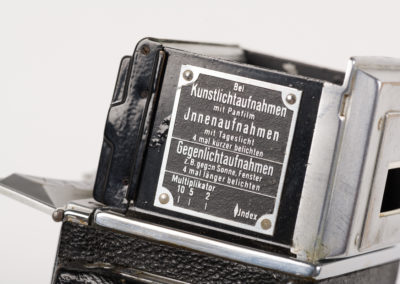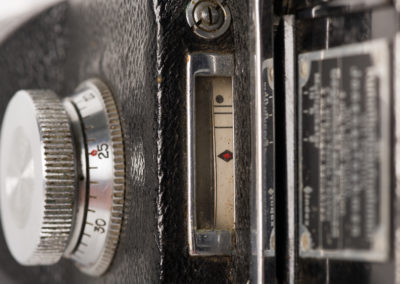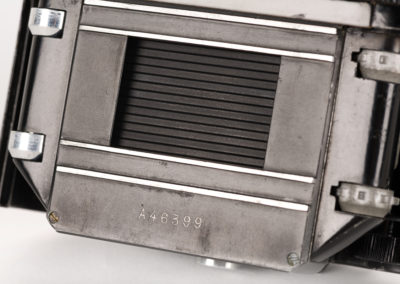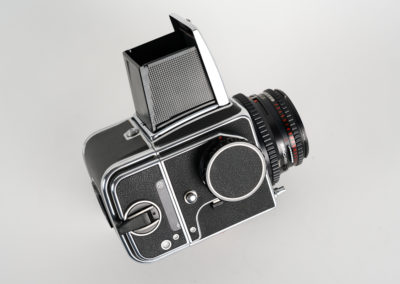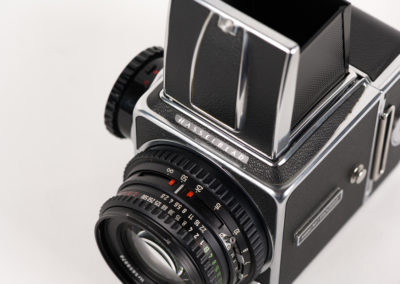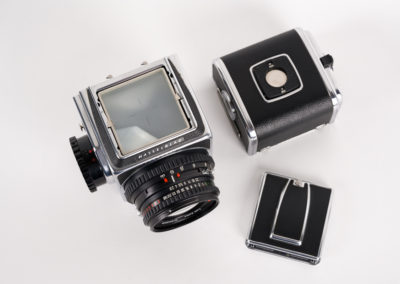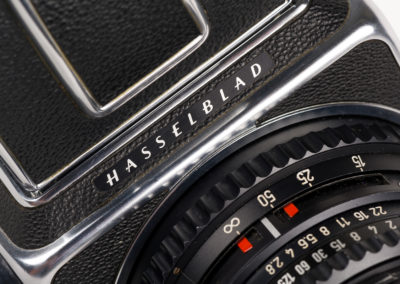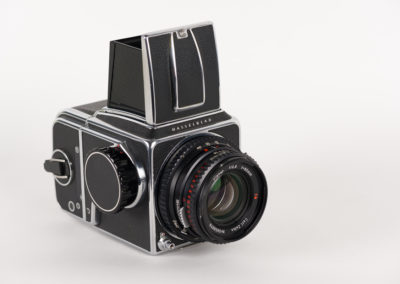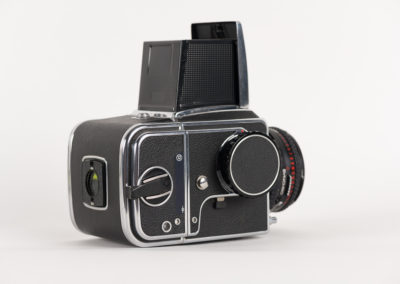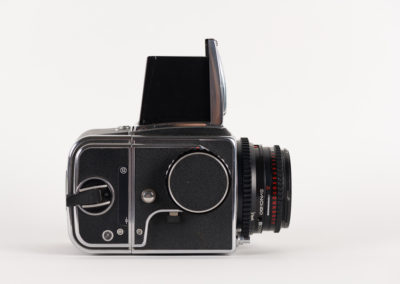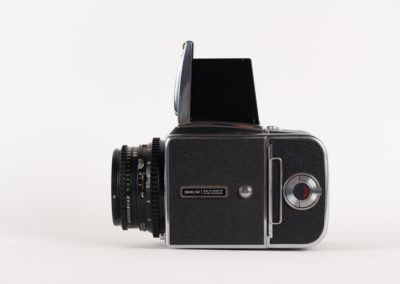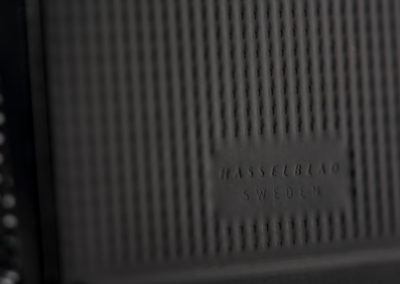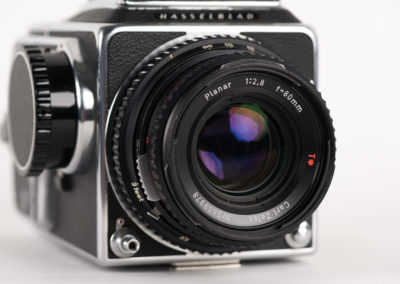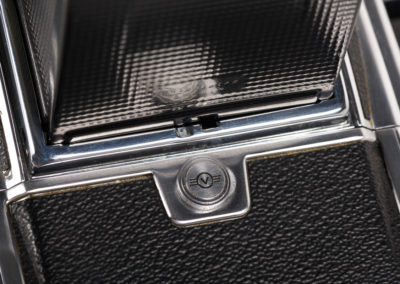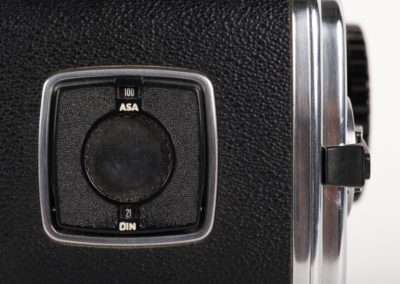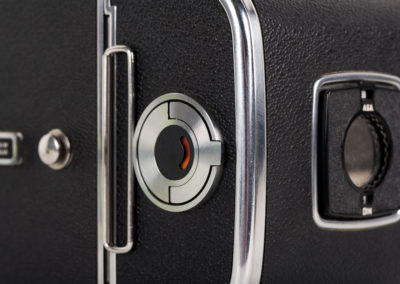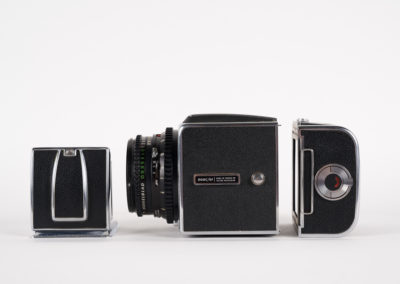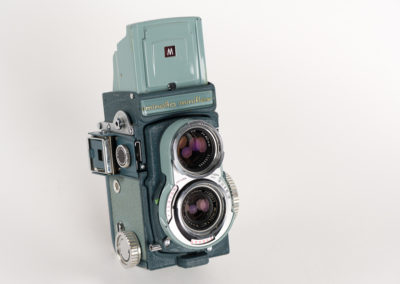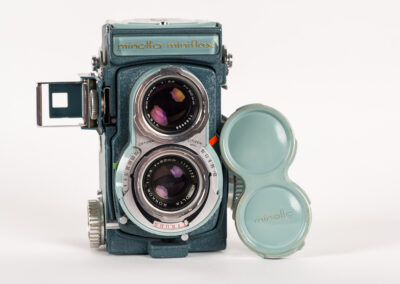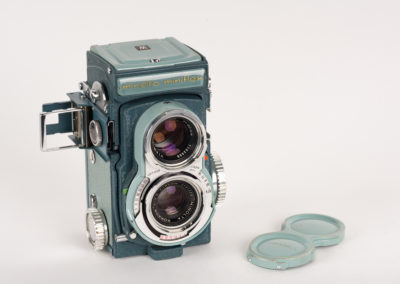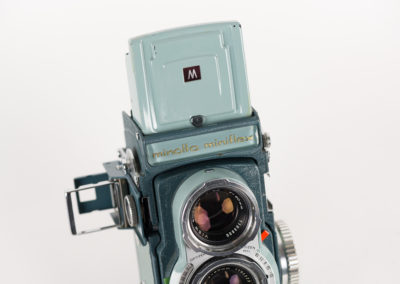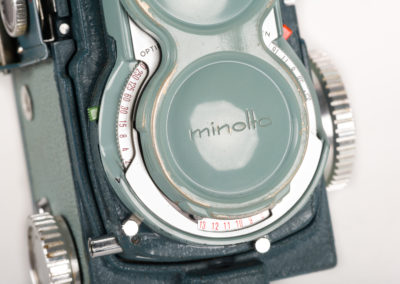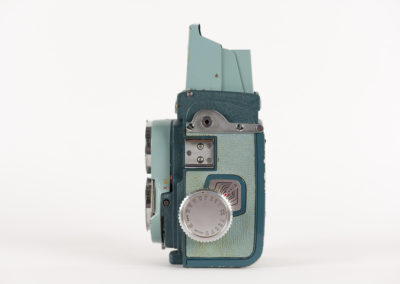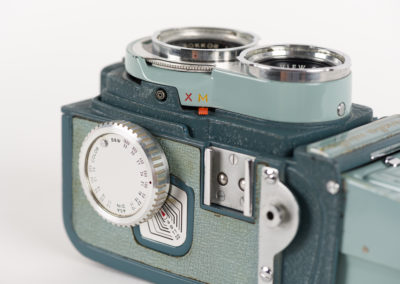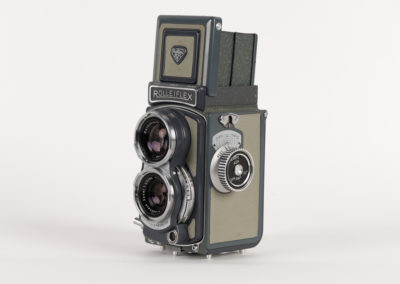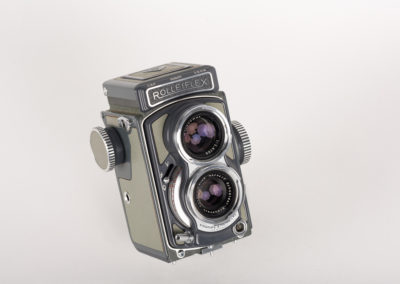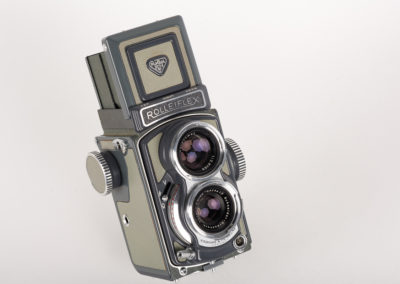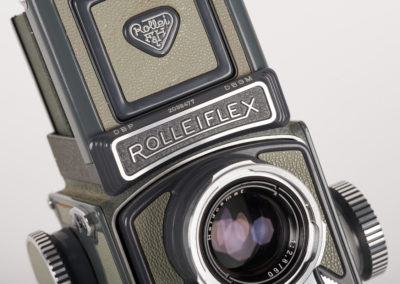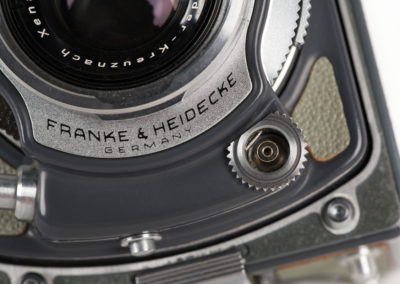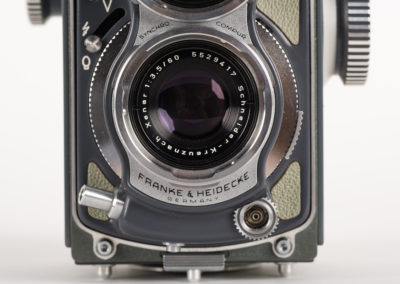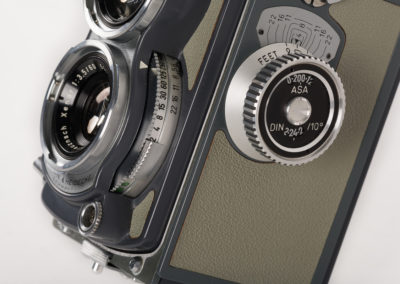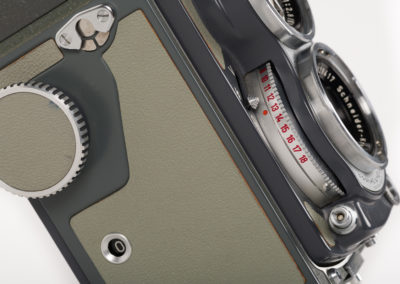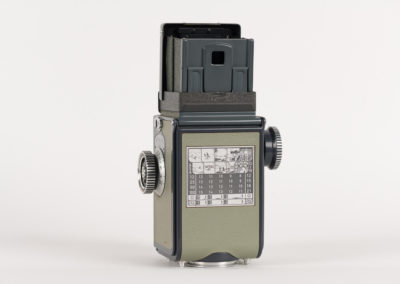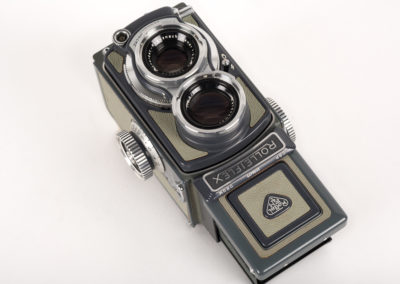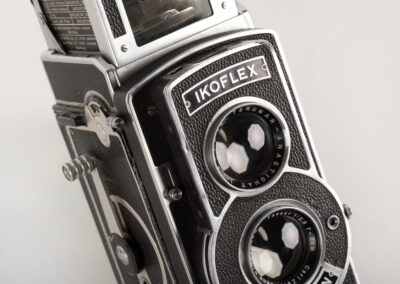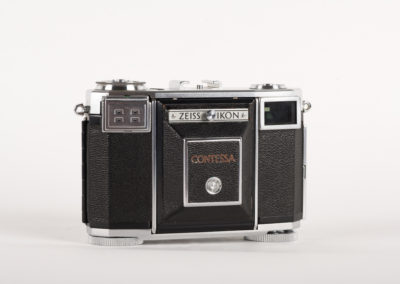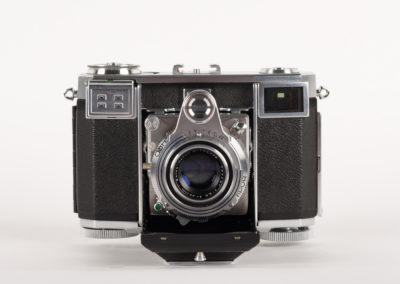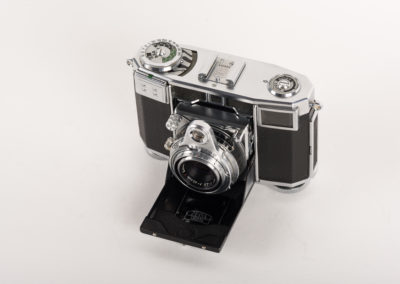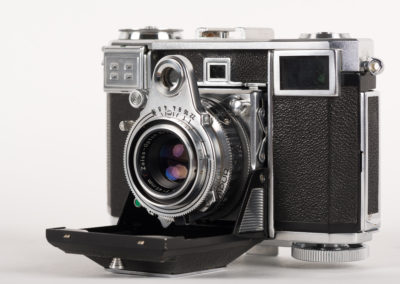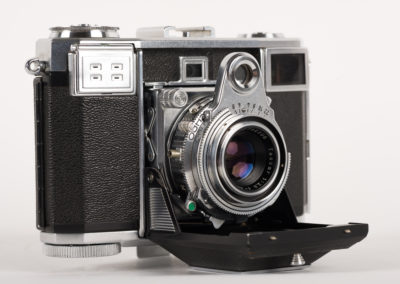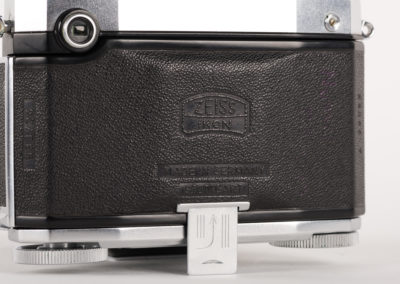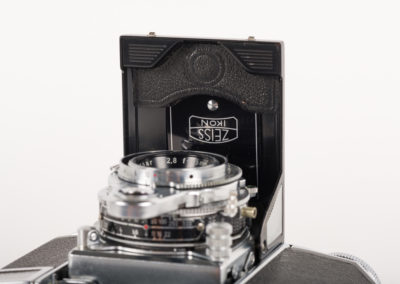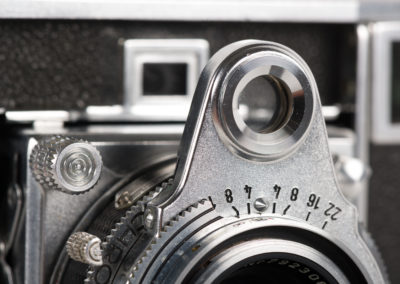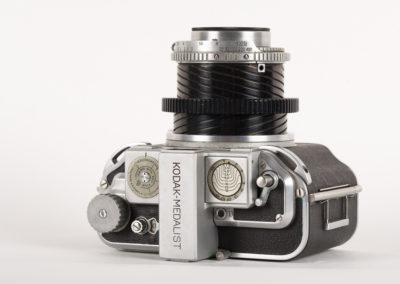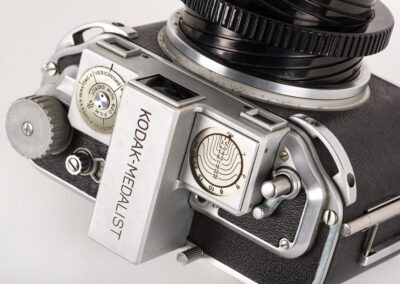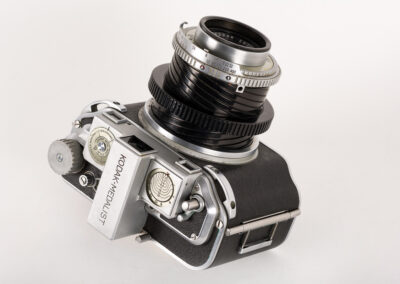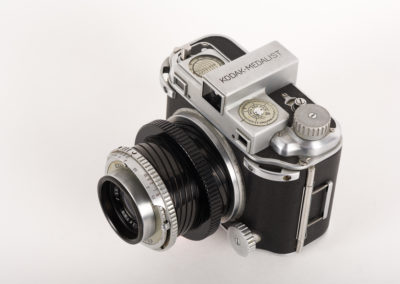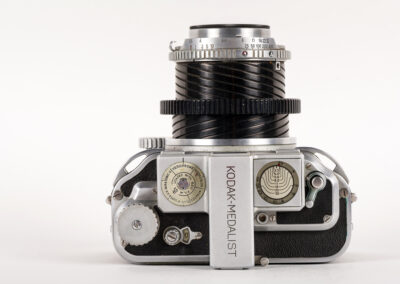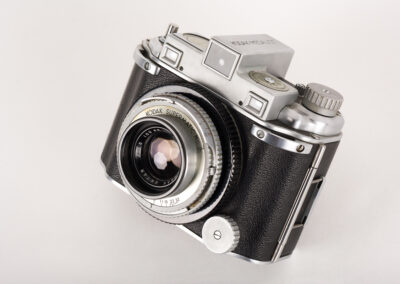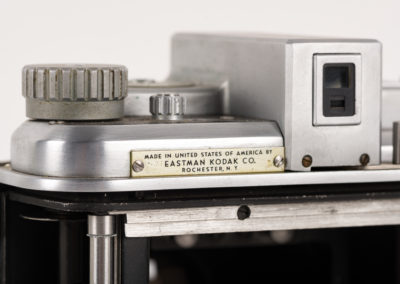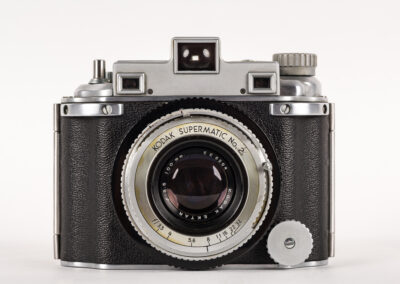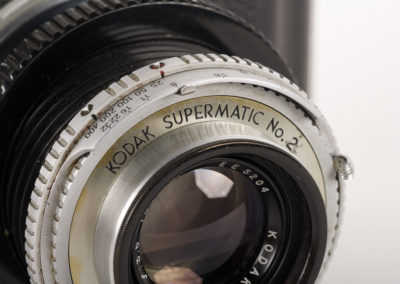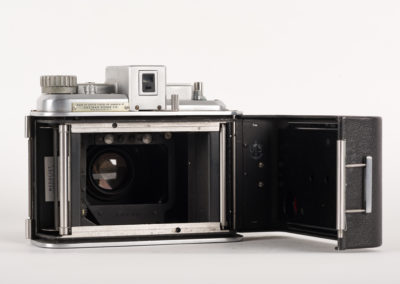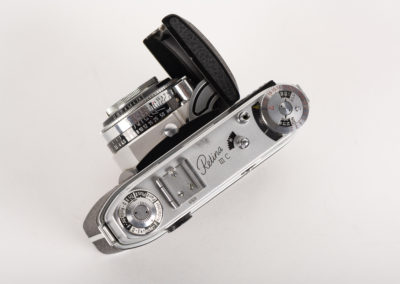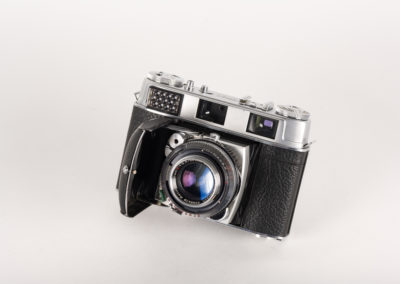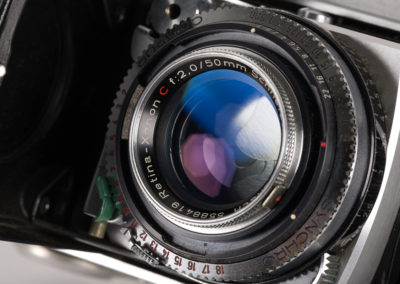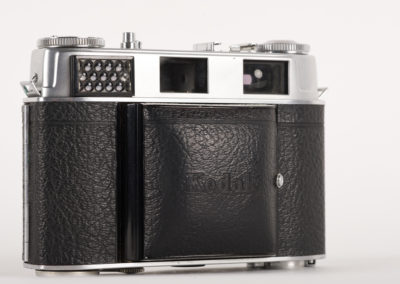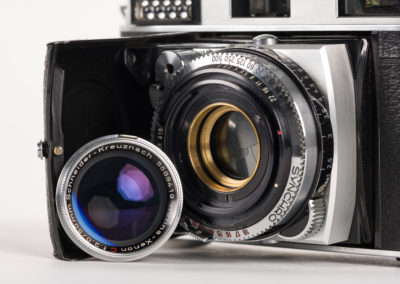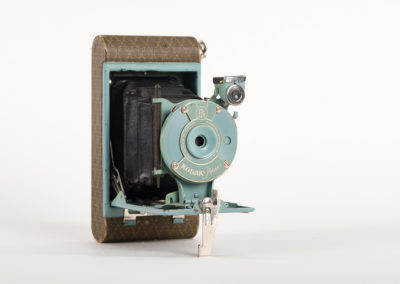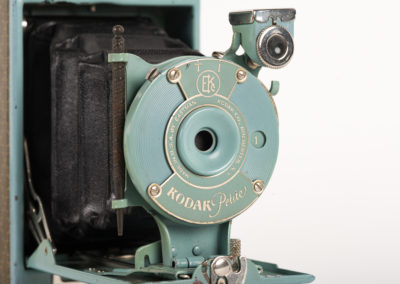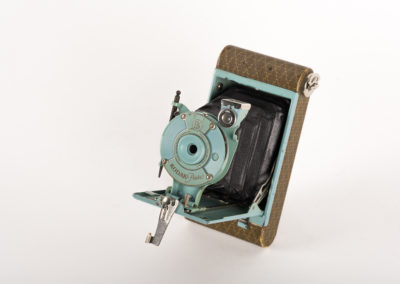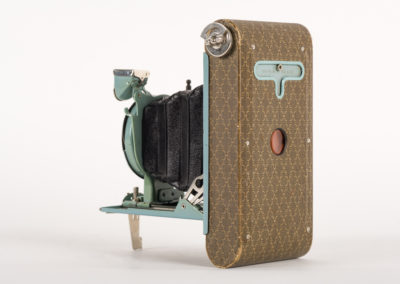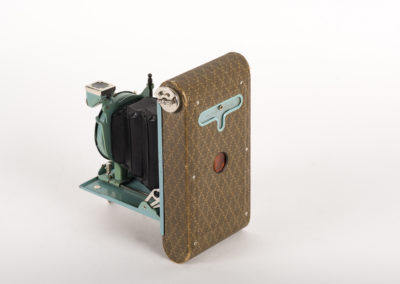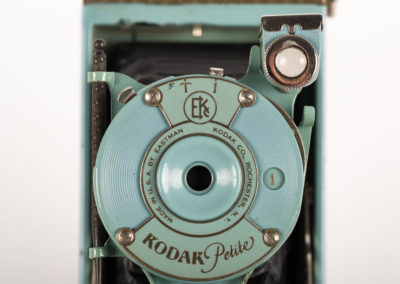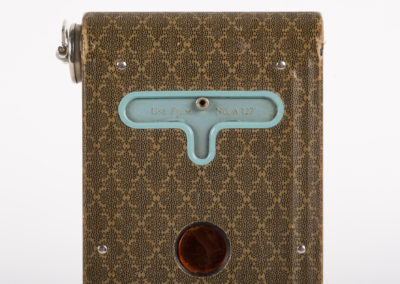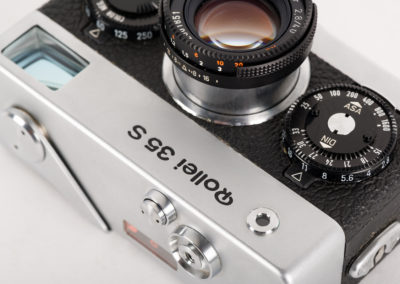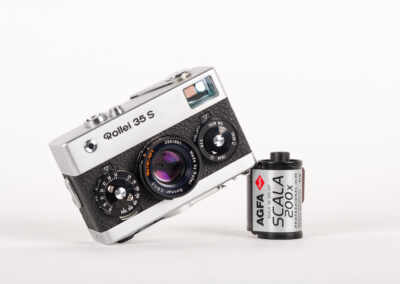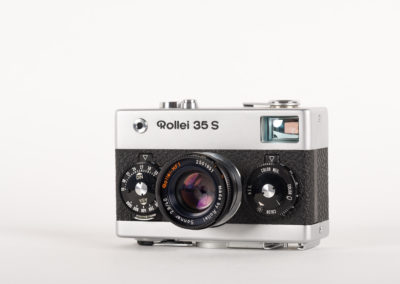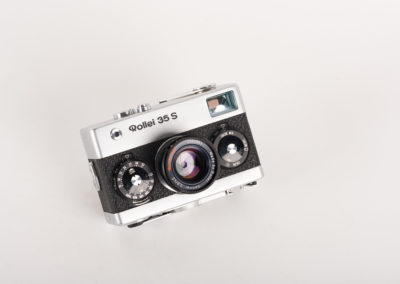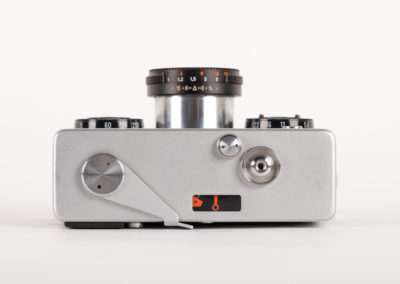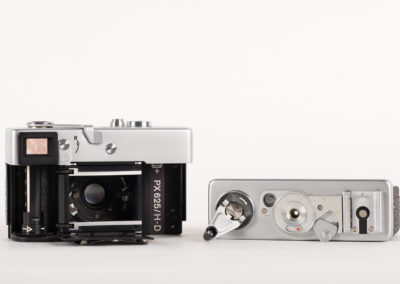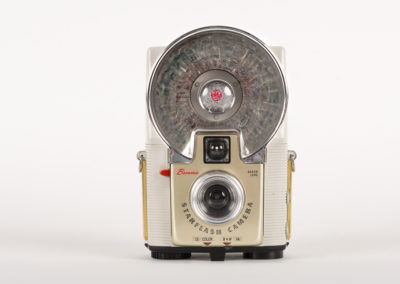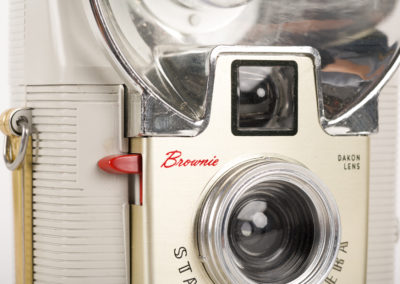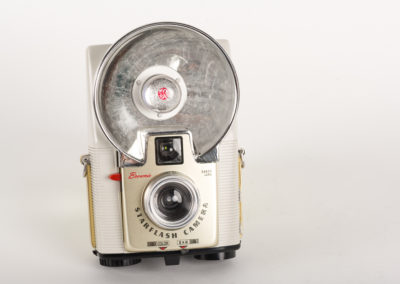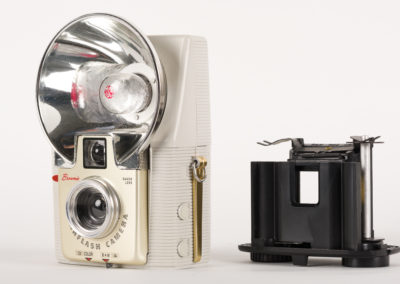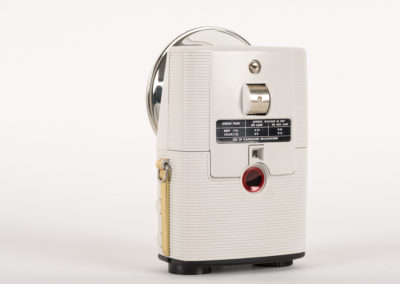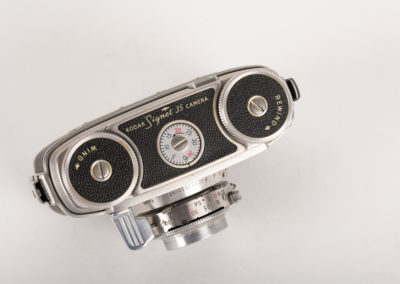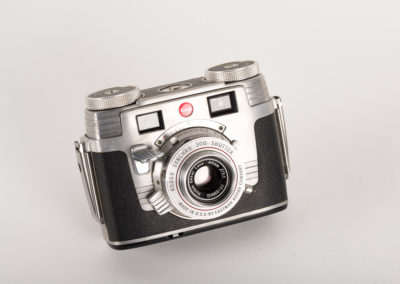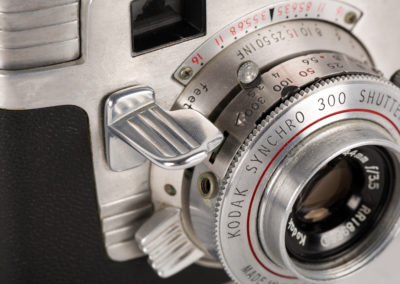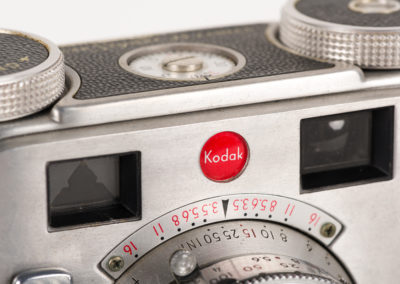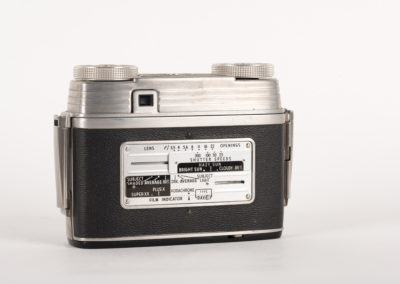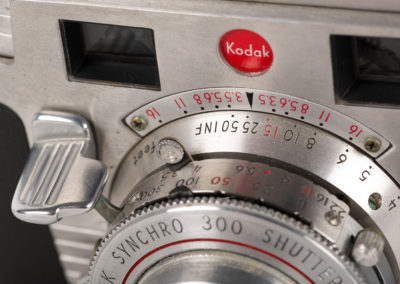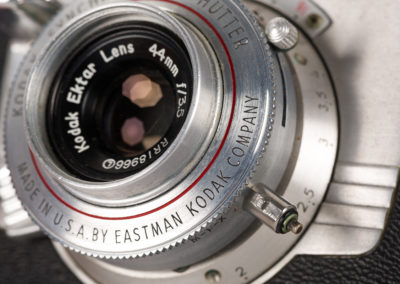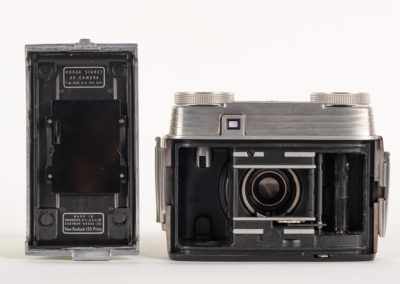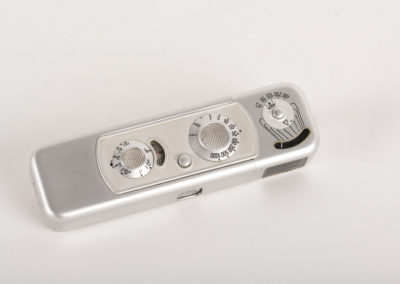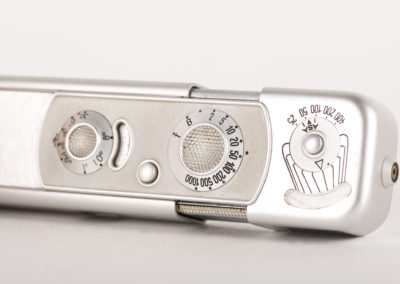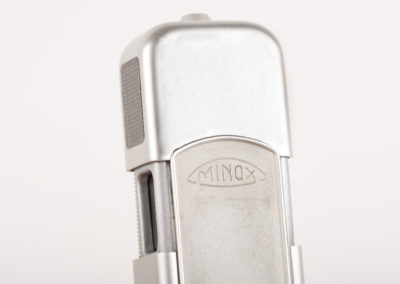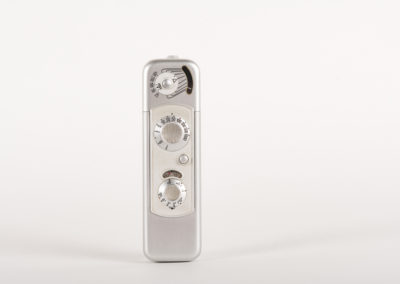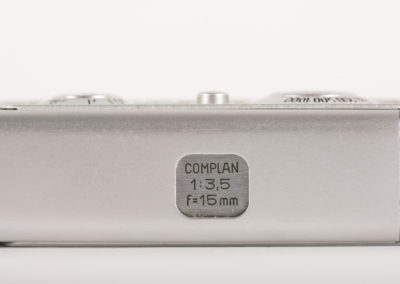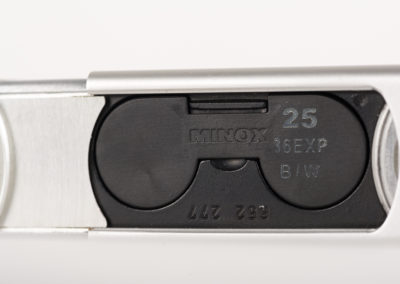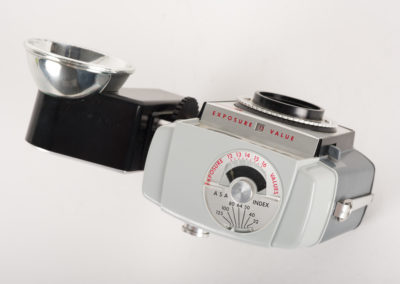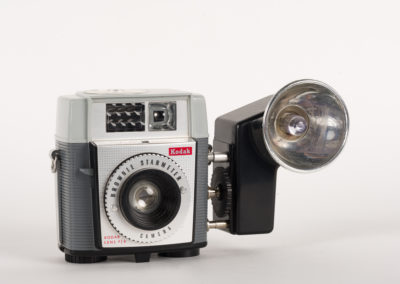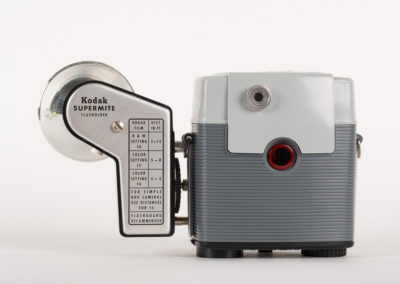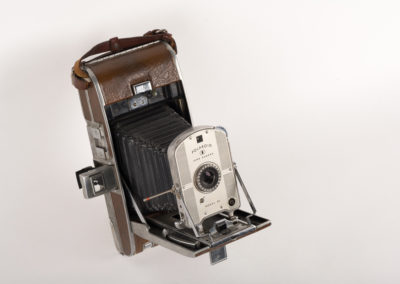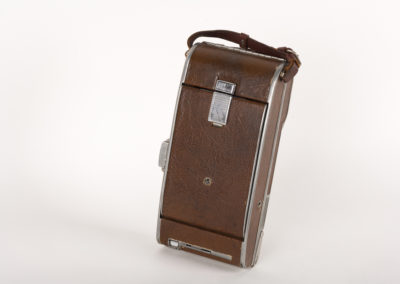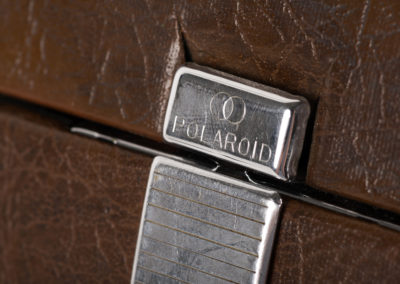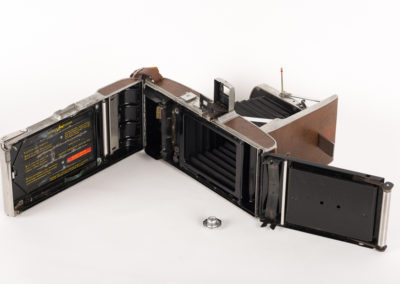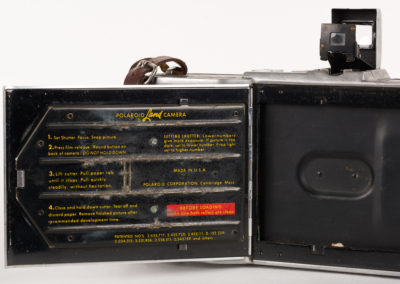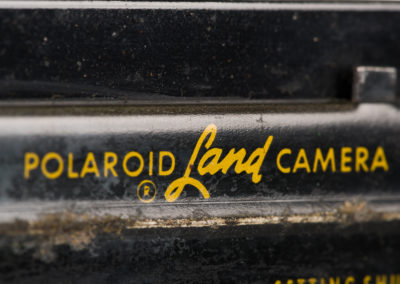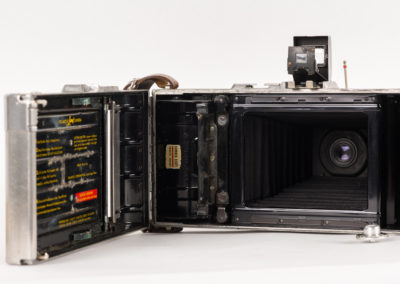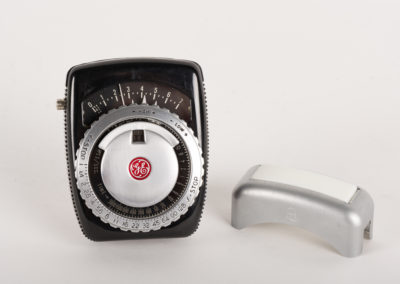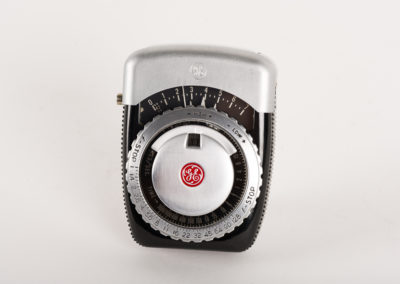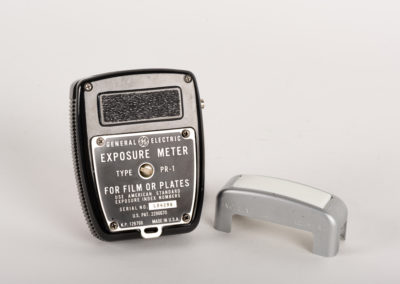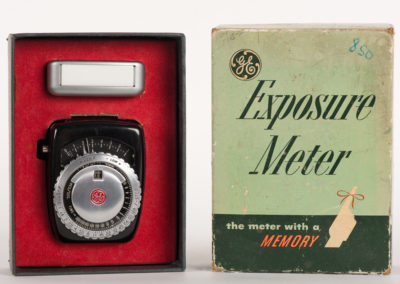Several years back I made a post about camera design covering what I think are some of the most beautiful cameras ever produced. When it comes down to it, cameras are simply tools a photographer uses to make photos. But tools can be beautiful, fun, and inspiring to use. Many would even argue that the experience of using a beautifully designed tool can influence the work that you create (I would count myself among them).
There’s something about using an old camera that you have to experience to fully understand. I think that the recent increase in film shooters speaks to a general desire for that sense of presence when creating photographs that the immediacy and clinical perfection of shooting digitally don’t provide. There’s a rawness in the resulting images, a depth in the grain, that seems to connect more to real life. Shooting film slows many people down. It makes you think more about what you’re doing, how you’re doing it, and perhaps most importantly why you’re doing it. Even if we end up scanning our film digitally it still provides us with something tangible in the negatives. Many people find that the more involved process, and even the waiting game that happens before we get our negatives back, gives a richer, more enjoyable experience that’s at least equally about the journey as the destination.
On top of that, shooting film gives us a sort of access to the past with the ability to shoot with an array of cameras from any decade over the past century. With that in mind I decided it was time to post another round of some of my favorite vintage cameras. As far as I’m concerned these tools are art in and of themselves.
Rolleiflex 2.8
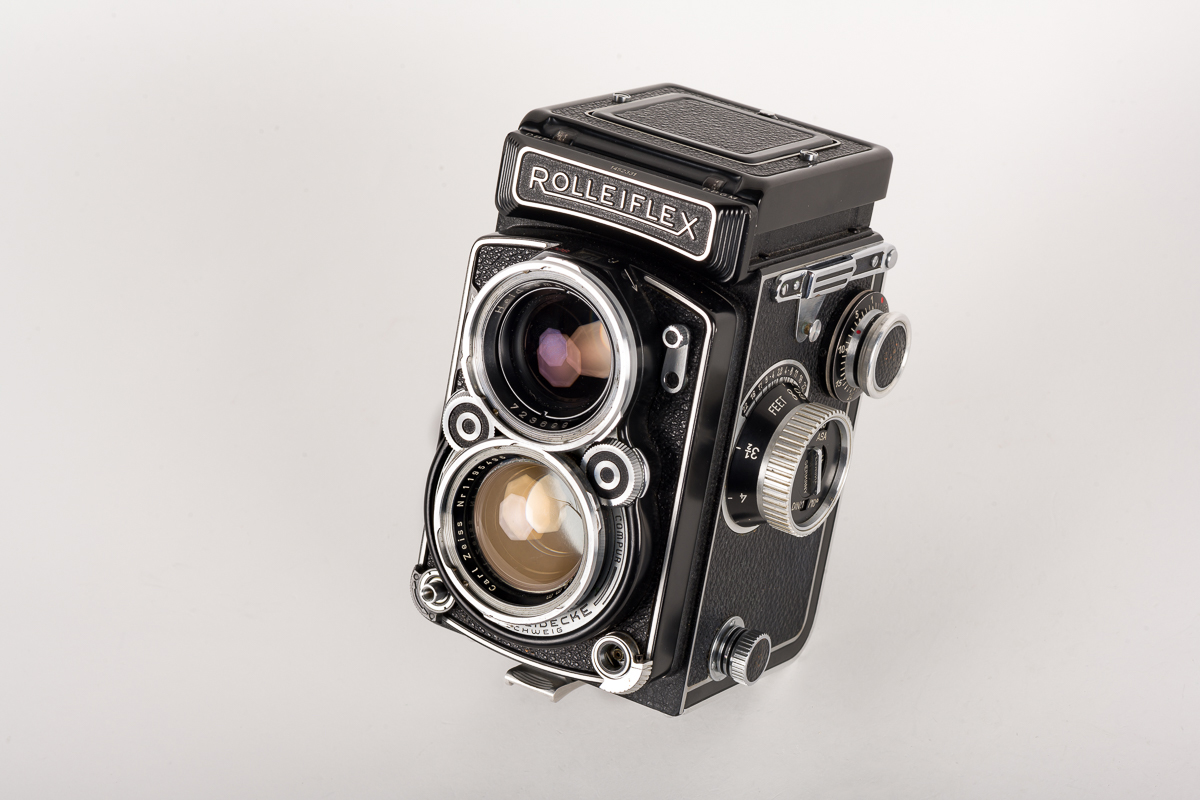
*click to enlarge images
About The Rolleiflex 2.8
TLR stands for twin lens reflex and is a type of camera with two separate lenses, one which is used for viewing and focusing, the other for taking the photograph. In my opinion (and in the opinion of many others) the Rolleiflex is the pinnacle of TLR design. They’re beautiful, reliable, and produce fantastic image quality. Plus, there’s just something about using them that’s hard to put into words. I’ll say it this way: these cameras just make you want to go take photographs. Most people are familiar with the Rolleiflex even if indirectly. Photographer Vivian Maier made most of her photographs with one.
Rollei has a rich history. What most of us recognize as the classic Rolleiflex dates back to about 1949 (though the first Rolleiflex was introduced in the 1920s). Over the years they underwent surprisingly few, though meaningful changes. Perhaps the biggest advancement in Rolleiflex design came in the 1950s with the introduction of the Rolleiflex 2.8 C. With the introduction of that model came the Schneider Xenotar and Carl Zeiss Planar lenses that Rolleiflex became famous for; it was the biggest step forward in image quality the camera would ever make (and the lenses stayed nearly the same for the remainder of their production. They were that good). Along with those lenses also came the eternal Planar vs. Xenotar debate as to which is the better lens. One thing that is generally agreed upon is that the Schneider Xenotar lens came first and Rollei turned to Zeiss to make a similar lens in order to keep up with camera demand. Rumor has it the Schneider name was more popular in Europe and thus more Xenotars were sold there while the Zeiss name was better established in the US and so we got more of those. I will say that I’ve owned numerous models with both lenses and if there is a practical difference then I don’t see it. They’re both phenomenal lenses that generations of photographers made their living with. My advice would be to get the camera with the lens in the best condition regardless of model.
Because of their current popularity I will say a little about the meaningful differences in the models you’re most likely to encounter. The 2.8 C, as mentioned, introduced the Xenotar and Planar lenses. They were the last model with fully rounded aperture blades, which some people claim produces a more pleasant bokeh (out of focus area). The camera pictured here is a 2.8 C. The 2.8 D introduced the EV system. That allows you to lock the shutter and aperture dials in sync with one another so that as you change one the other also changes to maintain consistent exposure. The 2.8 D is a less common model. The 2.8 E was offered in various versions, one which is simple and has no light meter. Most of the Es have the addition of an uncoupled light meter, which adds a little size and weight. This means that you have a light meter but it is not connected to your shutter and aperture dials. To get the correct exposure you have to look at the meter, set the EV scale, and then set your shutter and aperture accordingly. There’s also an E version which offers a removable waist level finder so you can use a prism finder. The 2.8 F was the most popular, highest produced model and thus the one you’re most likely to come across. It’s also the most expensive. It added a coupled light meter and removable waist level finder. A coupled light meter means that the changes you make to your shutter and aperture dials are shown in the meter itself, speeding up meter usage. You can also use a prism finder with it. I’ll say it again though, a 2.8 C and 2.8 F have the same optics in general, so it’s wise to go with the model in the best condition. I’ll also add many E and F meters are no longer accurate so I’d advise against paying a premium for something you cannot properly use.
Of course there are more details, but this generally sums it up. To further confuse matters there’s also the Rolleiflex 3.5 series which follows pretty closely the changes mentioned above though the widest aperture available is f/3.5. They are more affordable than the 2.8 and many people think they offer the same, if not better, image quality. There are several good resources out there for Rolleiflex cameras including Rolleiclub, Rolleigraphy, and Harry Fleenor (who is widely considered to be the world’s top Rolleiflex technician if you need repairs).
Leica IIIC
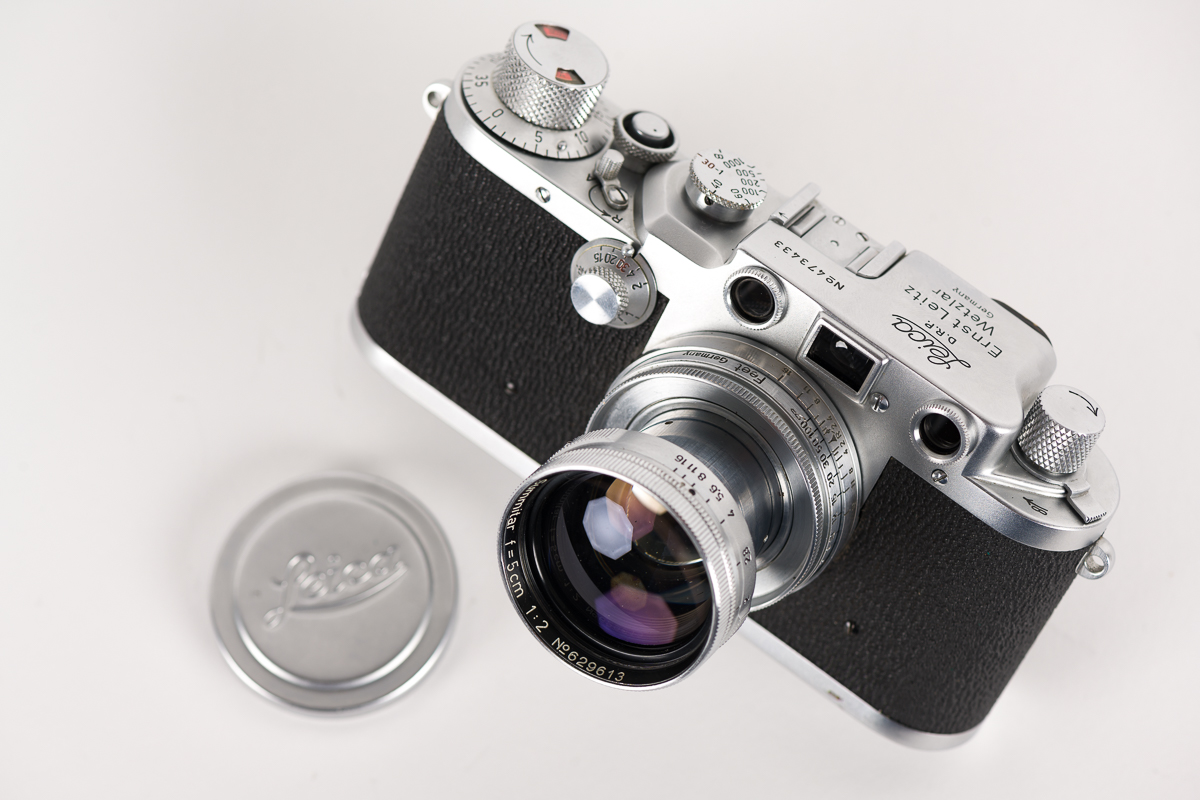
*click to enlarge images
About The Leica IIIC
Leica (via Oskar Barnack) is largely responsible for 35mm film still being with us today. Made to use standard 35mm movie film, the early Leica cameras helped to popularize 35mm for photography. The cameras were small and light so they traveled well and were relatively straightforward to use. To this day the company has the well deserved reputation for making high quality, reliable gear. Should you need a Leica repair may I suggest Don at DAG Camera. He returned this particular one to being as good as new (maybe even more accurate, actually).
The Leica IIIC (and Leica III series in general ) was very popular and was produced from the early 1940s through the early 1950s. There were several variations with minor modifications. My particular one is a post-war model dating from 1951 and looks practically brand new. By today’s standards it’s a slow moving camera. There are two separate windows to look through, one with the rangefinder for focusing and the other used for composition. Everything is fully manual and there is no light meter. The lens is mounted to the camera with a simple screw thread and if you mount any lens other than the standard 50mm you will need an external viewfinder to properly compose.
Some very famous photographers used these screw mount Leicas (including Henri Cartier-Bresson), with one of the most well known works being Robert Frank‘s The Americans. On that note, next time you’re caught up on camera gear just think about the work that was done with something as slow moving as this camera!
Contaflex TLR
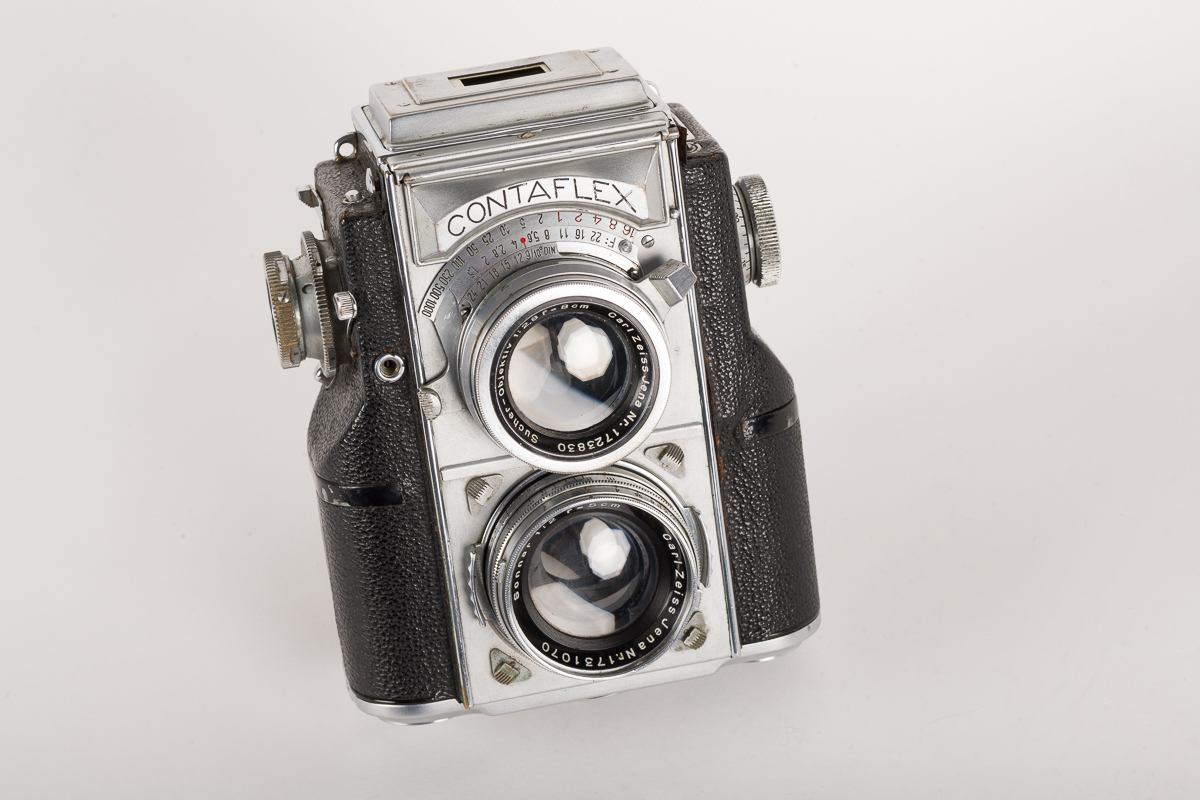
*click to enlarge images
About The Contaflex TLR
The Contaflex TLR is a bit of an odd one. Built in the mid 1930s, it’s big, heavy, expensive, and has some complicated internal elements that weren’t always the most reliable. It was the first camera with a built in exposure meter. And it also came with some creepy advertising.
Though it is the same size and weight (heavier in many cases) than comparable medium format cameras it actually shoots 35mm film. You can still use them today with any regular 35mm cartridge. The focal plane shutters, which are metal, are frequently found to not be working. As a true TLR, you use the top lens with the waist level finder for viewing and focusing. One interesting thing about this camera is that it takes interchangeable lenses but only the bottom lens changed. If you put on a different lens then you would use the markings in the viewfinder that corresponded to each focal length for composition. Because the image is reversed in the viewfinder it also has an Albada finder that you hold up to your eye and look straight through in order to compose for moving objects.
Though it is up for debate, it would seem there were only between 7000 and 8000 of these cameras ever produced. Many of them no longer exist today. Of the ones that do many of those are no longer functional. If you come across one of these somewhere at a cheap price it would be worth grabbing it, even if only to look pretty on a shelf.
Hasselblad 500CM
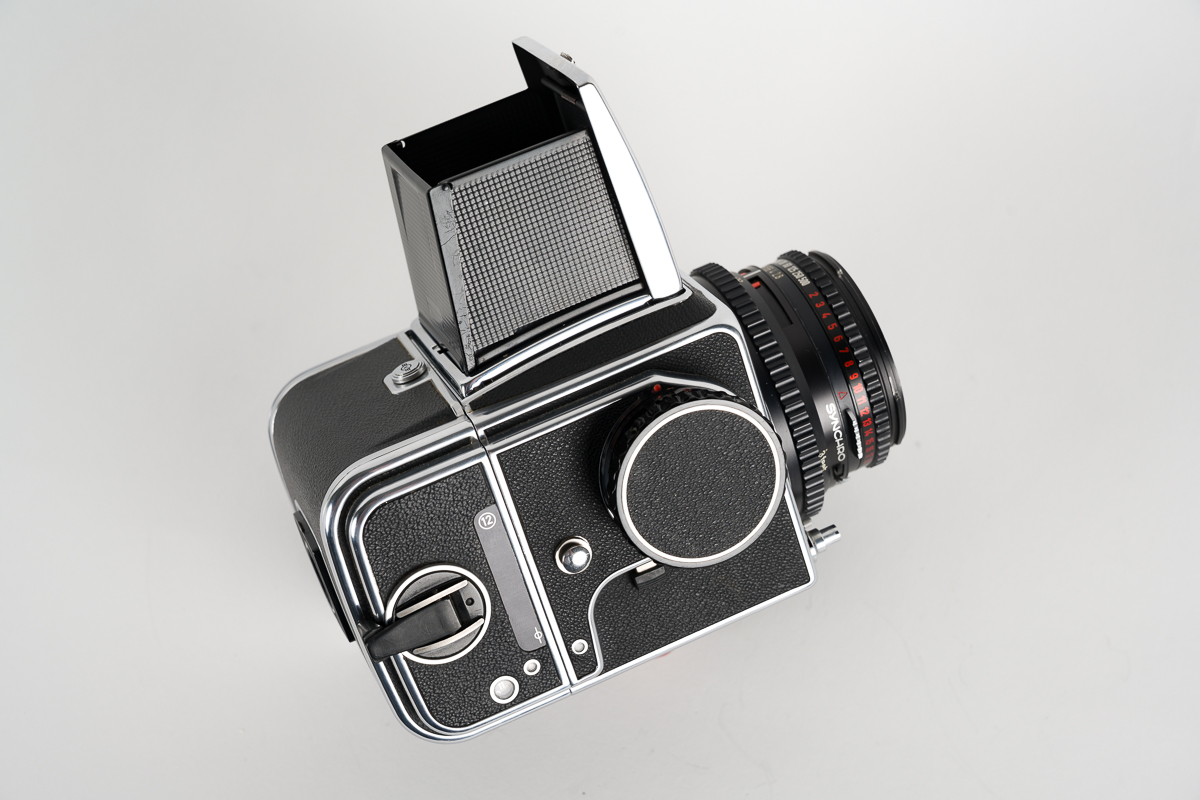
*click to enlarge images
About The Hasselblad 500 C/M
Named for its top shutter speed of 1/500 sec., the Hasselblad 500 is truly one of the most iconic cameras ever produced. Introduced in 1957, the 500 series was made through the mid 2000s and were seen by many as the pinnacle of cameras for a studio photographer to have, or about any other photographer for that matter. They even went into outer space. Some of the most famous photos ever made were created on these cameras. There were numerous incremental upgrades over the years and this particular model is the 500c/m, the second model to be produced.
They are as highly sought after today as they were back then with prices going up seemingly daily. A modular camera system, the entire camera comes apart into individual elements which can be switched. Want to shoot more than one film type at a time? No problem, get as many film backs as you like and switch them every frame. Need different viewfinders, focusing screens, winding knobs? Those all change too. And of course there’s a full selection of famous Zeiss lenses. It all amounted to an incredibly versatile, reliable, complete system that still produces some of the finest image quality that you can get.
An interesting side note. The story goes that the founder of Hasselblad, Viktor Hasselblad, and the founder of the company that produced the Rolleiflex, Reinhold Heidecke, struck up a sort of friendship despite their companies being competitors. They made a verbal agreement that Hasselblad wouldn’t enter the TLR market and Rolleiflex wouldn’t enter the SLR market. That agreement held through the remainder of Reinhold Heidecke’s life. It wasn’t until after his death in 1960 that Rollei released a medium format SLR, the Rolleiflex SL66.
Given the increasing interest in using these cameras there’s also an increase in equipment needing repair (those C lenses often need work). David Odess is the go to guy for that.
Minolta Miniflex
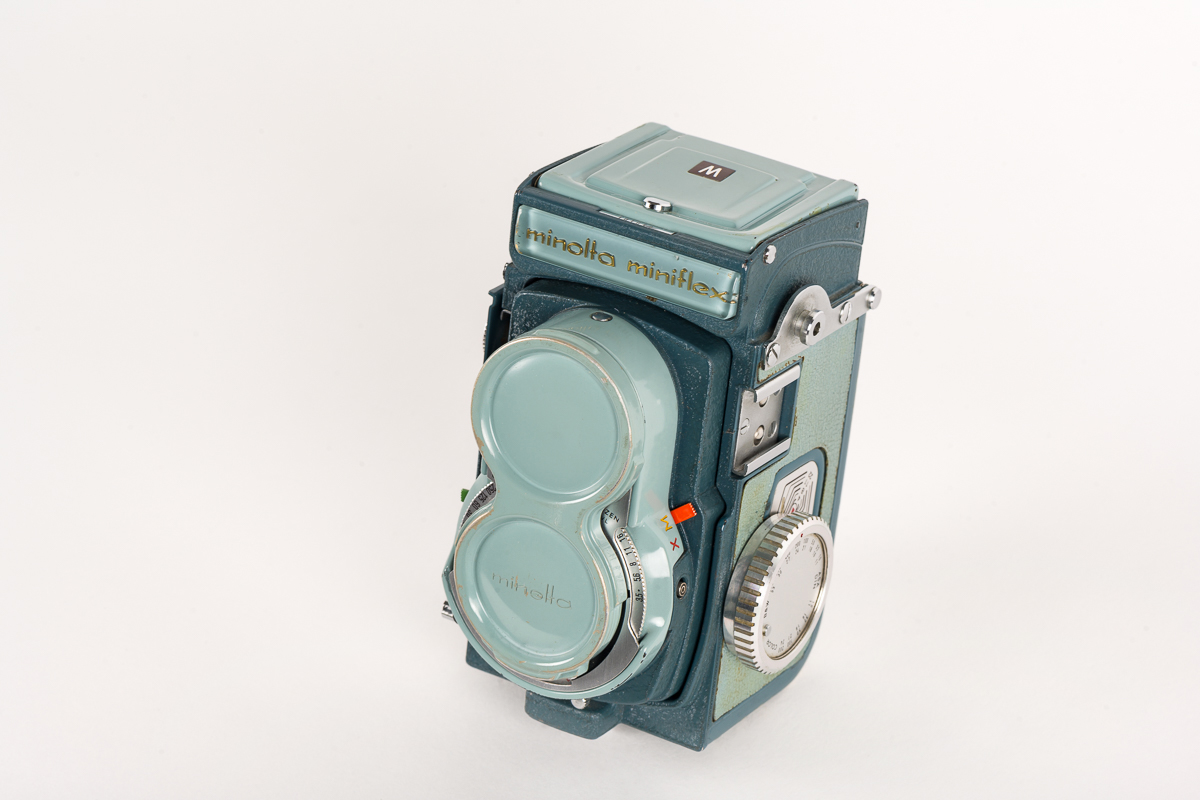
*click to enlarge images
About The Minolta Miniflex
Though the design looks similar to other medium format TLR cameras, the Minolta Miniflex takes smaller 127 film and shoots 4×4 cm images rather than the typical 6×6 cm. It made the camera smaller, lighter, and thus easier to carry around. Plus the color was intended to attract more casual users. Personally, I find it to be one of the most beautiful cameras out there. Admittedly, it’s often considered to be more of a looker than a performer, which isn’t to say you can take good photographs with it.
Minolta introduced this camera in the late 1950s to compete with the Baby Rolleiflex (which will show up below). Unfortunately Minolta was a bit late-ish to the game and by the time the Miniflex was released the 127 format was again waning in popularity. A relatively rare camera, it’s believed only somewhere around 5000 of them were ever produced. It took me some years to find one in decent condition with a functional shutter.
Baby Rolleiflex 4×4
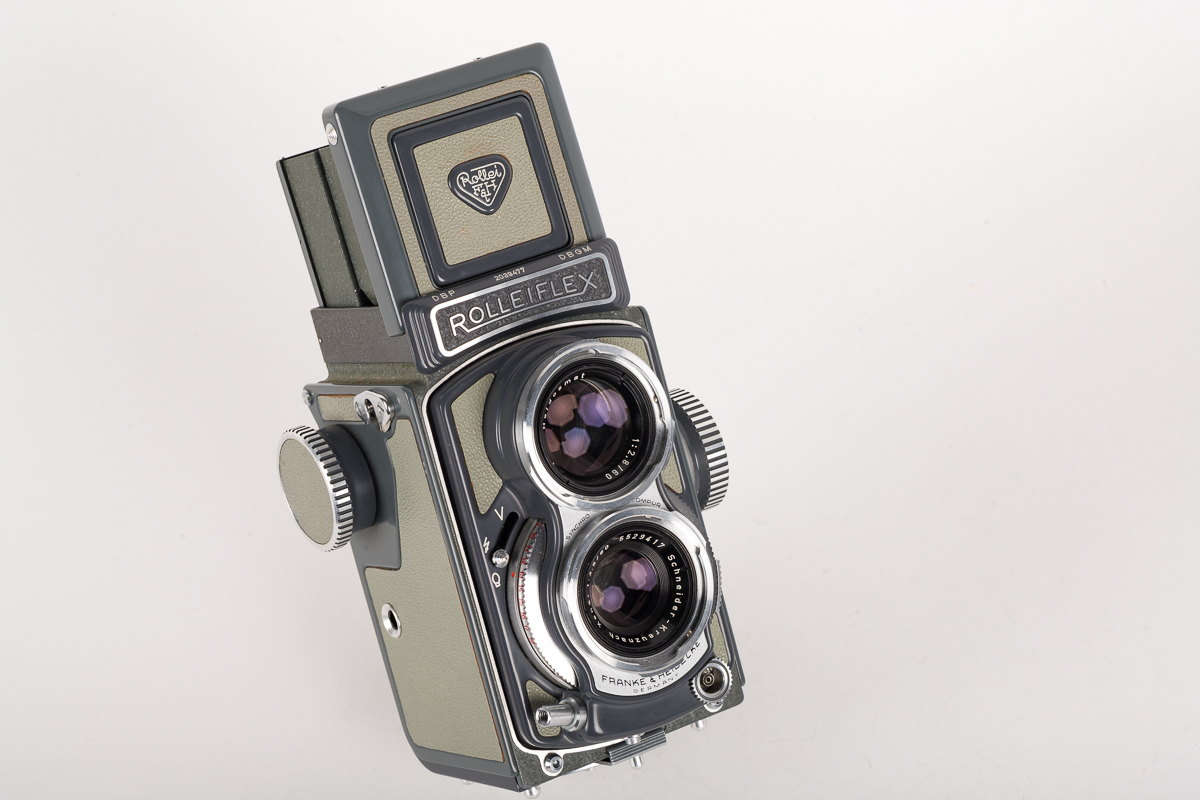
*click to enlarge images
About The Baby Rolleiflex
As things tended to go with Rollei, the Baby Rolleiflex is probably the highest quality 4×4 cm camera ever produced. Holding one you wouldn’t think it any less of a camera than it’s larger, more professional counterparts.
Though originally released in 1931, the gray version here was introduced in 1957 and helped to reinvigorate 127 film, albeit relatively briefly. 127 film produced slides with the same overall mount size as 35mm slides, so they could be used in a standard projector, but with a larger image. There would be some copycats, namely the Yashica 44 in my first post here and the Minolta Miniflex above. You can still buy 127 film and shoot these cameras. They’re incredibly fun to use. The Baby Rolleiflex was produced through the late 1960s.
Ikoflex III
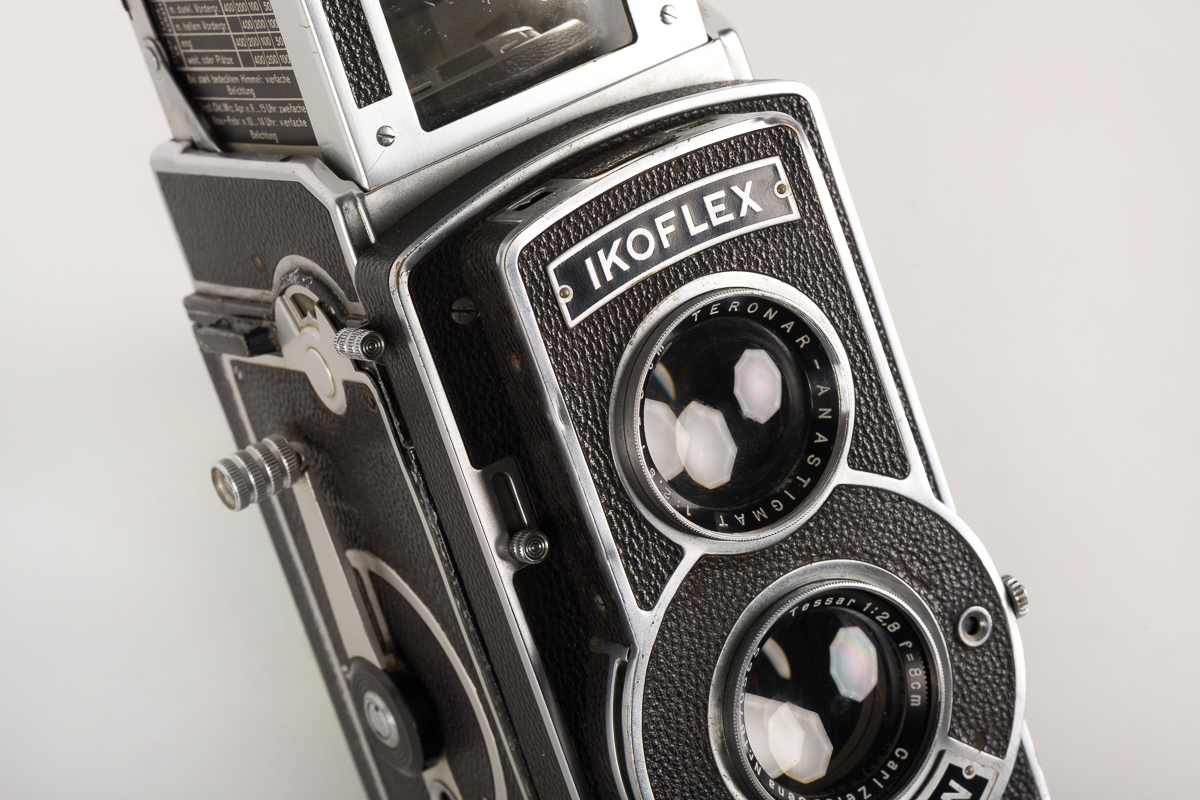
*click to enlarge images
About The Ikoflex III
The Zeiss Ikon Ikoflex III is another unusual camera. For one thing, there was already a camera from the same company named Ikoflex III which then became the Ikoflex II once this one was introduced. That one is now often referred to as the Ikoflex II/III. Not confusing at all, right? On top of that it was only produced from 1930 until 1940, so there were only some 8500 of them ever produced.
Their short life cycle was largely in part to the fact that they cost more than a Rolleiflex, which they were introduced to compete with. They’re relatively difficult to find these days, especially in working order (I’ve been told the film advance/shutter mechanism is neither the most reliable nor the easiest to repair), but if you do find one you can load it up with modern 120 film and shoot away.
Zeiss Ikon Contessa 35
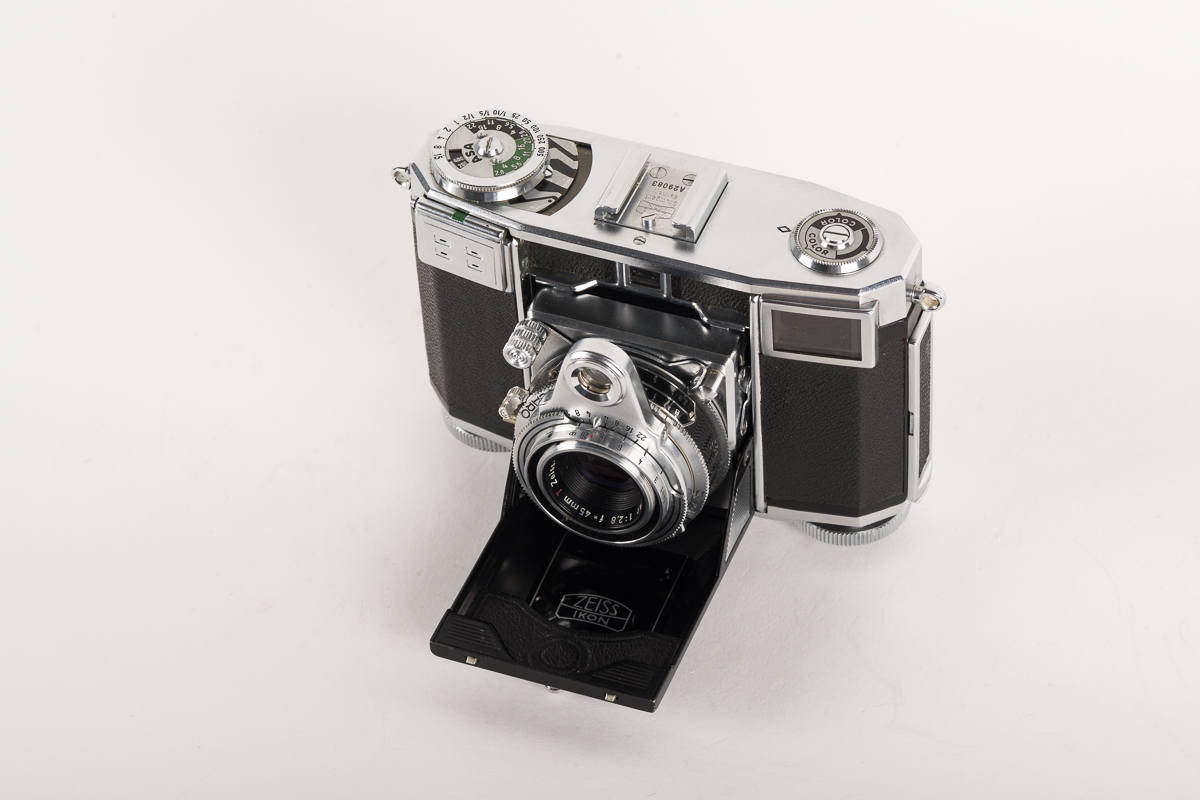
*click to enlarge images
About The Zeiss Ikon Contessa
Zeiss Ikon produced a lot of really beautiful cameras, and I have plenty others I haven’t included here. There are many medium format and 35mm Zeiss Ikons that take modern film so you can still use them today, this one included. It takes standard 35mm film and is quite fun to use. They frequently sell for less than $100 too, so when it comes to old, functional cameras they’re quite affordable. And on that note, give some consideration to the Contaflex IV, a readily available, well made, easy to use SLR that can often be found for less than $50.
There was a series of Contessa-named cameras produced with this model being known as the Contessa 35 or the folding Contessa. It was produced in the mid 1950s in West Germany and was generally considered a higher end camera both on account of the quality of construction and the design. It has a built in light meter and a Zeiss lens. That interesting round window you see on the front is for the rangefinder that’s used for focusing. It also has a clever tab that pulls down in the back so you can sit the camera down and it will remain level. Plus, it folds up nicely to minimize its size when you’re traveling. Needless to say, a lot of details went into this camera. It was designed by a guy named Hubert Nerwin, who had a history of making some great, beautiful cameras. Most of these cameras I’ve come across are still working great today with the exception of the light meters.
Kodak Medalist
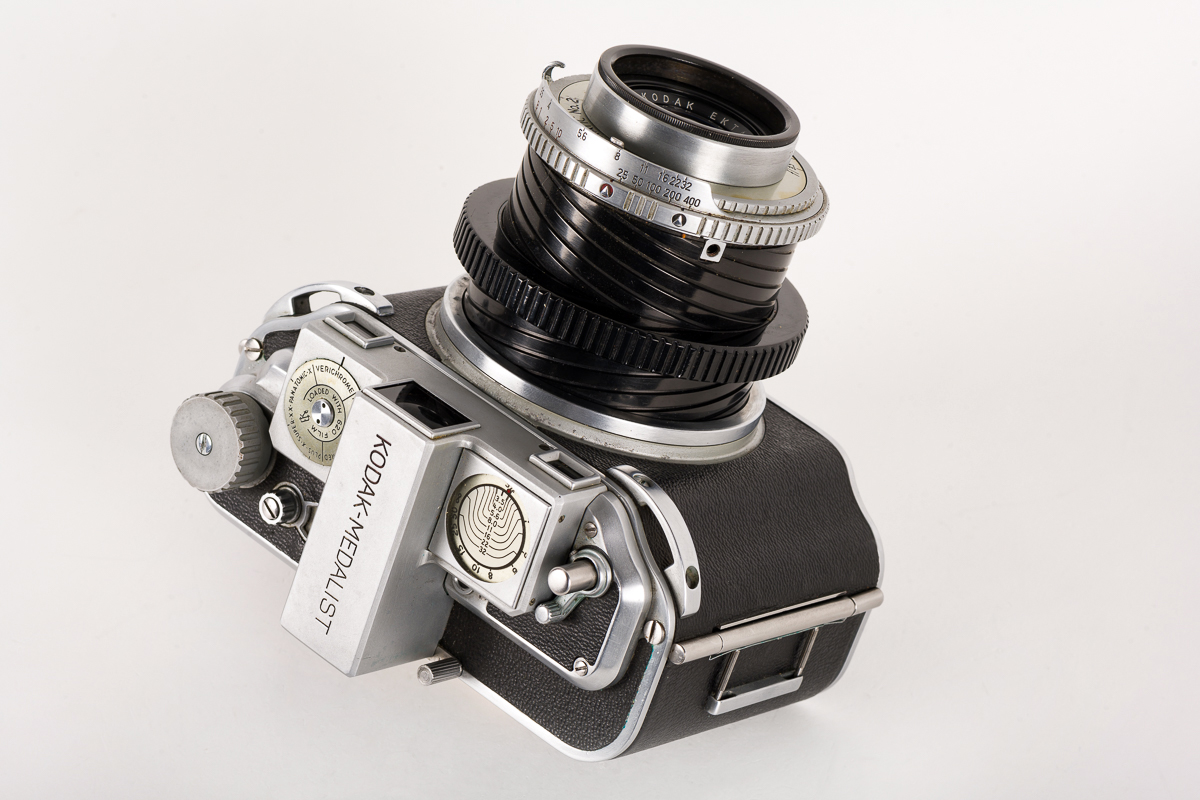
*click to enlarge images
About The Kodak Medalist
The Kodak Medalist was a big, heavy, but sturdy camera produced starting in the early 1940s and designed in part by Walter Dorwin Teague, which is why it’s also a great looking camera. There were two models produced with the first, the one you see here, said to have been used by the armed forces. I can believe it because the thing is built like a tank. Japan and Germany were known to be the best camera makers at the time but they were fighting on the wrong side of the war. These Medalists were made in America. If you look at the photo with the camera back open you’ll see the letters “US” with an anchor between them stamped inside.
The cameras shoot 6×9 cm images on 620 film. This means that you can either re-spool modern 120 film onto 620 spools and shoot it, file down your 120 rolls to fit the camera, or have it converted to take 120 film right out of the box. One of the coolest features is the way the lens moves in and out to focus like the threads of a screw. The single viewfinder has two sections inside, the top one for composing and the bottom one for using the camera’s rangefinder to focus. It’s generally considered to have a great lens, at least for the time in which it was made, so many people still shoot them today.
Though it is a relatively straightforward, fully mechanical camera there are some quirks to using it. If you ever get your hands on one make sure to read about the shutter lock on it because if used incorrectly it can lock up the camera. The best advice is to simply leave that in the off position if you want to save yourself some headaches.
Kodak Retina IIIC
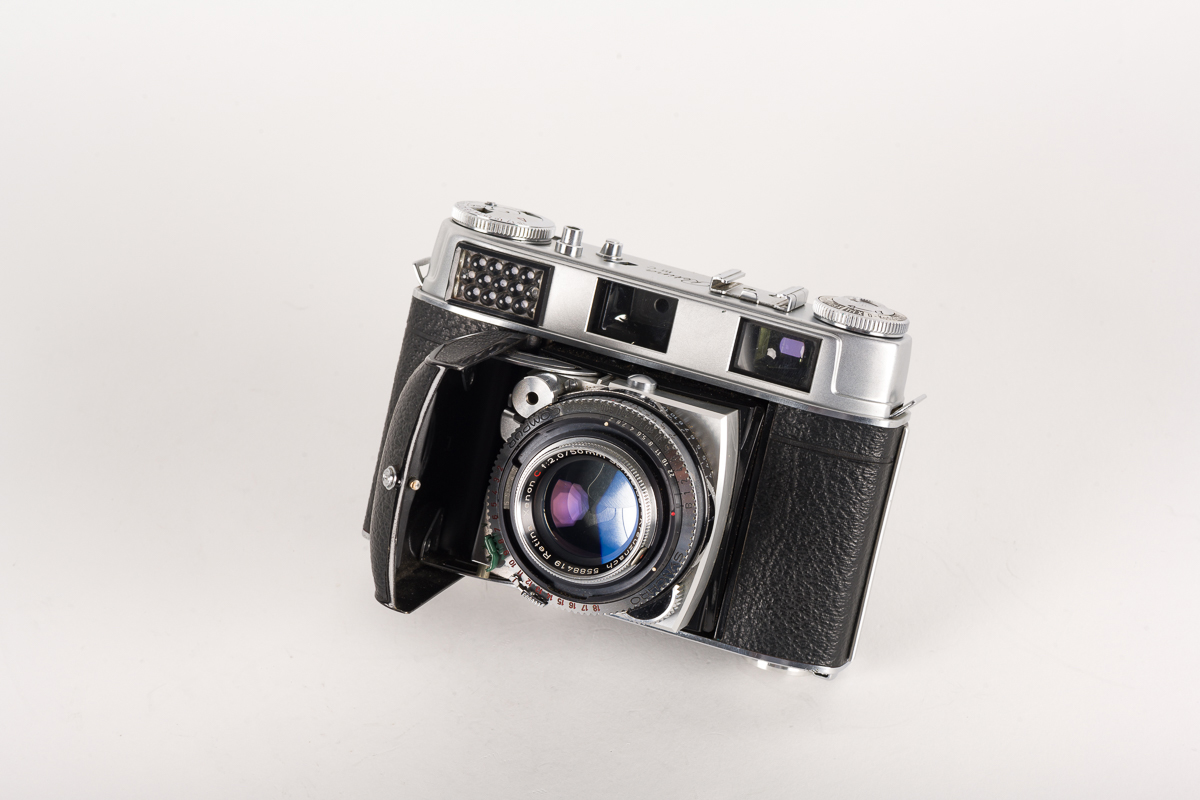
*click to enlarge images
About The Kodak Retina IIIC (big C)
The Kodak Retina IIIC represents perhaps the finest German made Kodak camera in the extensive Retina lineage. Though there is of course debate over that, at bare minimum this final iteration of the folding Retinas is the most collectible and most expensive one to buy currently. Though Kodak largely had a reputation for making strictly consumer oriented cameras the Retina IIIC was well made and had a great lens.
It does have a few interesting quirks. For one, there are two different IIIc versions, the IIIc and the IIIC. Get it? Often referred to as the “little c” and the “big C”, the big C version (pictured here) was newer (introduced in 1957) and has a different, larger viewfinder which contains frame lines for 35, 50, and 80mm lenses. Which brings us to another interesting feature. While you can change lenses on the Retina IIIC, you really only change the front element. The rest of the optics stay the same, so it isn’t truly an interchangeable lens camera. The film advance lever is also on the bottom of the camera and takes takes some getting used to. You also have to push a button on top of the camera and then move a button on the back of the camera to manually reset the frame counter, which is a bit awkward.
Quirks aside, it’s a fun camera to use that takes standard 35mm film. While the IIIC will cost you more than the IIIc, they will both take equally good photos. So if you’re interested in using one you can save yourself some money by buying the little c version.
Kodak Petite
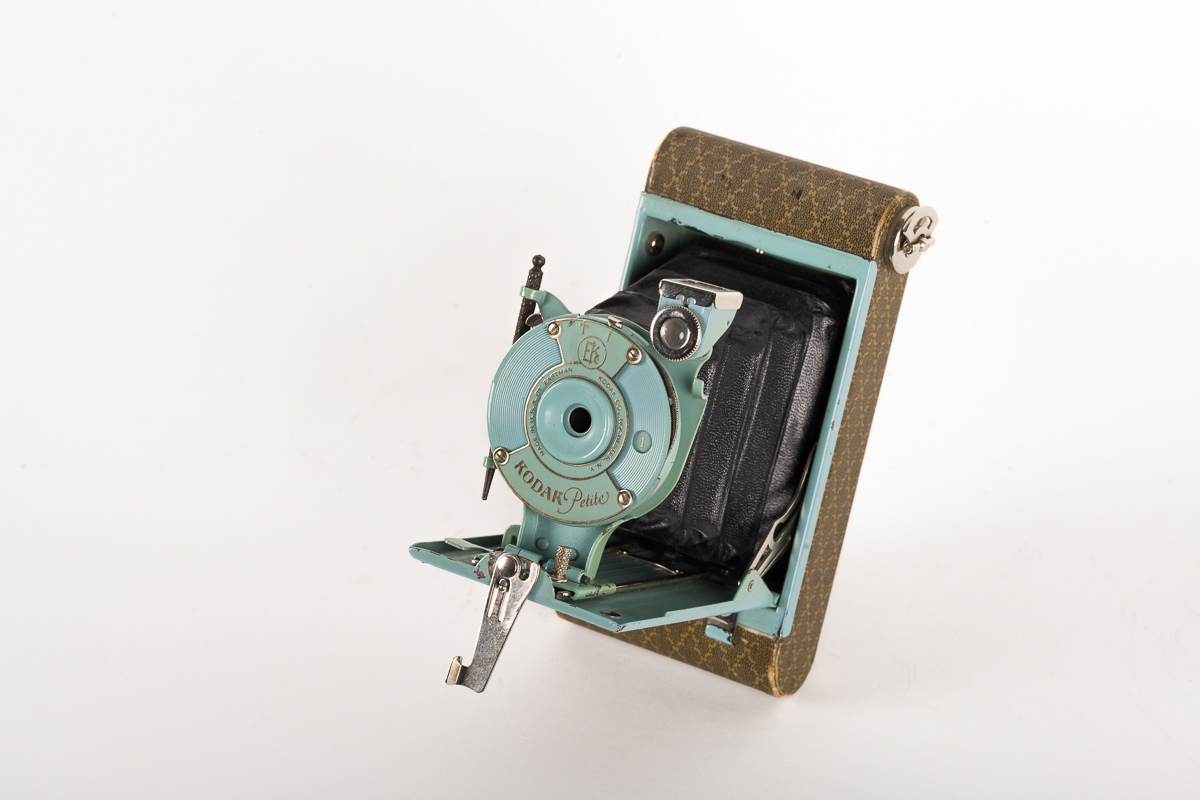
*click to enlarge images
About The Kodak Petite
The Kodak Petite is basically a dressed up, art-decoed, version of the Vest Pocked Kodak (one version of which I posted about here) which, with it’s matching case, was intended to be marketed to women. Made for only about 5 years between the late 1920s and early 1930s, it came in blue, grey, green, old rose, gray, and lavender. The one pictured here is the blue one. They take 127 film so you can still use them today if you find one with intact bellows. From a photographic standpoint there is no advantage to the Petite over the Vest Pocket Kodak, so if you’re looking for one to use then save yourself some money and buy the Vest Pocket. These Petite’s are mostly collected at this point.
Rollei 35 S
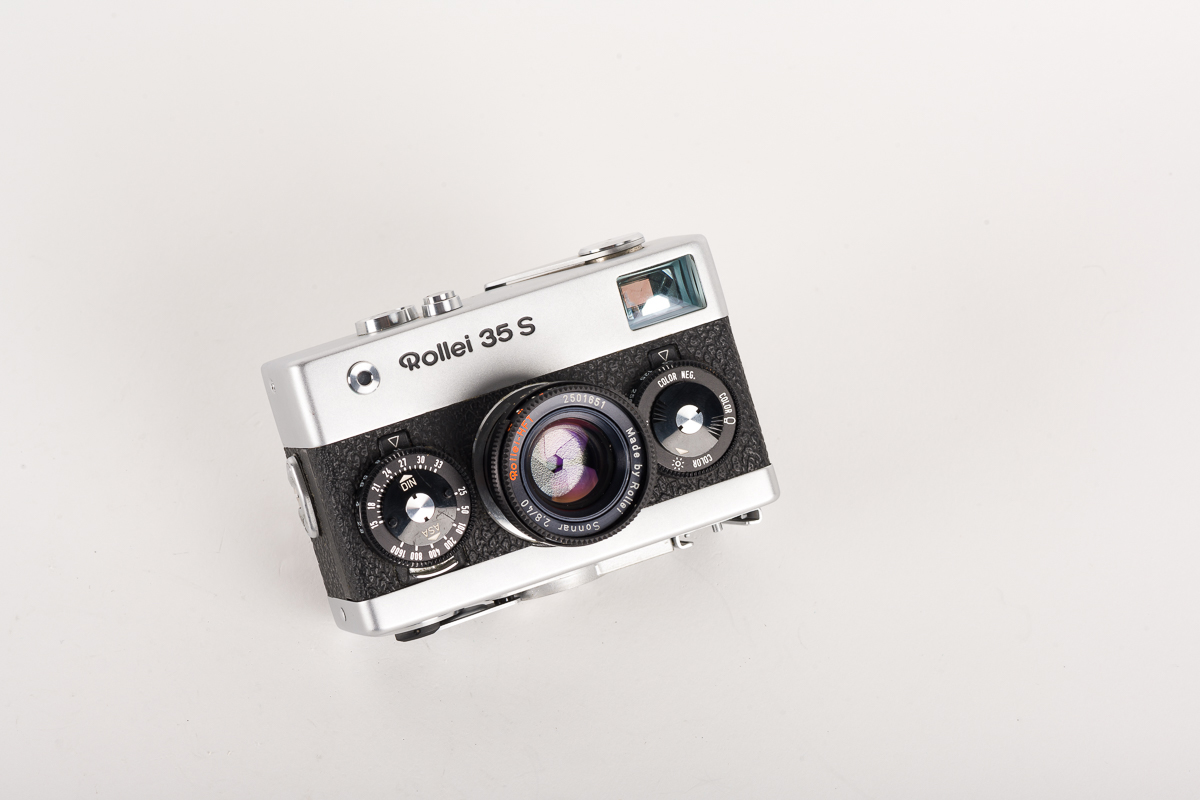
*click to enlarge images
About The Rollei 35 S
The Rollei 35 was a series of compact 35mm cameras. The original 35 was actually the smallest 35mm camera in the world at the time of its introduction. Released in the mid 1960s, the Rollei 35 was initially made in Germany until production was moved to Singapore. The German version is generally more sought after on account of there being less of them available and the idea that they are somehow better quality, though there seems to be no evidence for the latter. Numerous versions were released over the years. This particular one is the Rollei 35 S, the “S” indicating it has a Sonnar lens design.
The idea was to make a camera that took regular 35mm film but at a fraction of the size of most cameras, and by most accounts it was a success. Despite its size it even has a built in light meter. The lens collapses into the body of the camera to make it even more compact. However, that compact design did bring along some quirks. The film advance lever is on the left side of the camera. The viewfinder is also just a straight viewfinder with no rangefinder mechanism. Thus, to focus the camera you have to have a good idea of the distance of your subject and then focus the lens by setting it to the proper distance. There’s no way to confirm focus. Given its faster 2.8 lens that makes shooting wide open with accurate focus rather difficult, thus it is best used by zone focusing. Both the frame counter and flash shoe are on the bottom of the camera with the flash being about as large as the camera itself.
If you can get past the few odd operational aspects the Rollei 35 is super fun to use and can produce great images.
Kodak Starflash
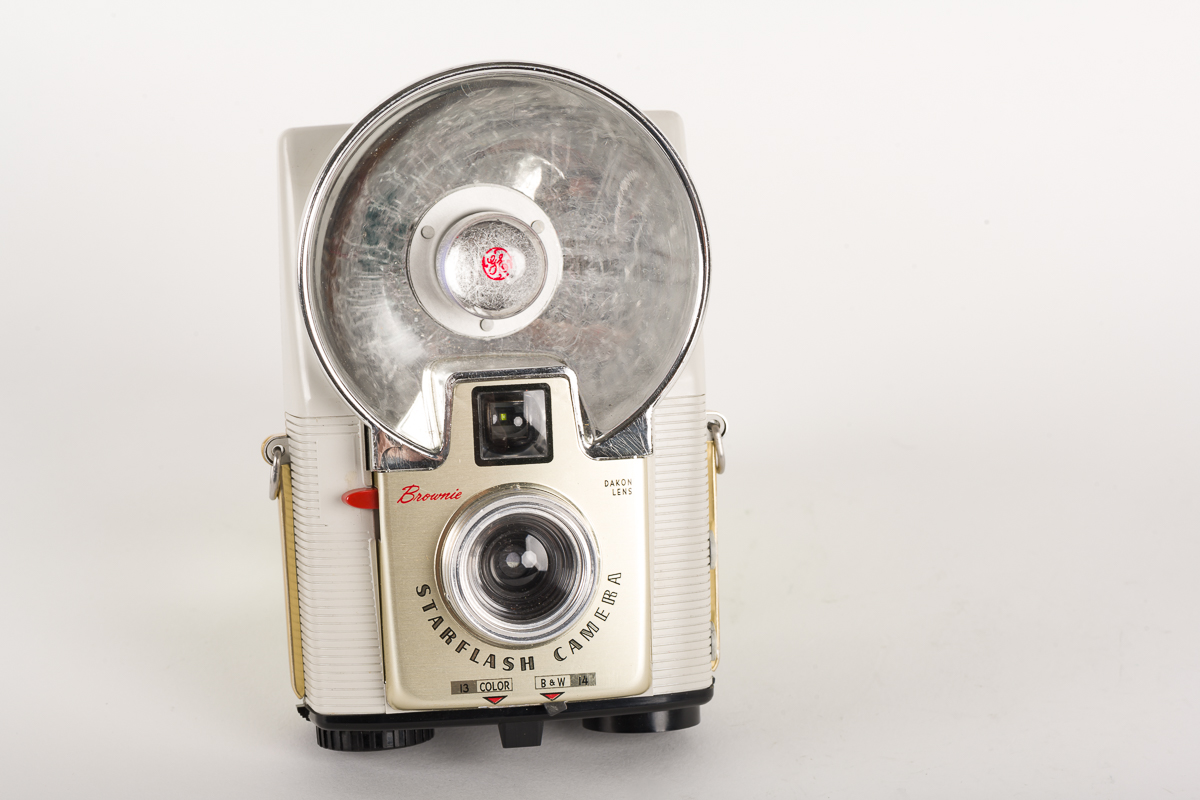
*click to enlarge images
About The Kodak Starflash
The Kodak Brownie Starflash was a cheap, plastic bodied, plastic lensed consumer oriented camera in the Brownie Star series of cameras. It was produced from the late 1950s to mid 1960s. As far as cameras go this one is pretty simple. There is a switch under the lens for color or black and white film. There’s not much else you can do other than press the shutter button! It was produced in red, white, blue, and black, plus a special edition Coca Cola version.
I find this model interesting on account of the large, integrated flash with a button on the back to pop out the bulb once you used it. Despite their simplicity, affordability, and relative abundance I find most of the plastic Kodak cameras of this era to be beautiful. I frequently pick up models I don’t already have as I find them.
Kodak Signet 35
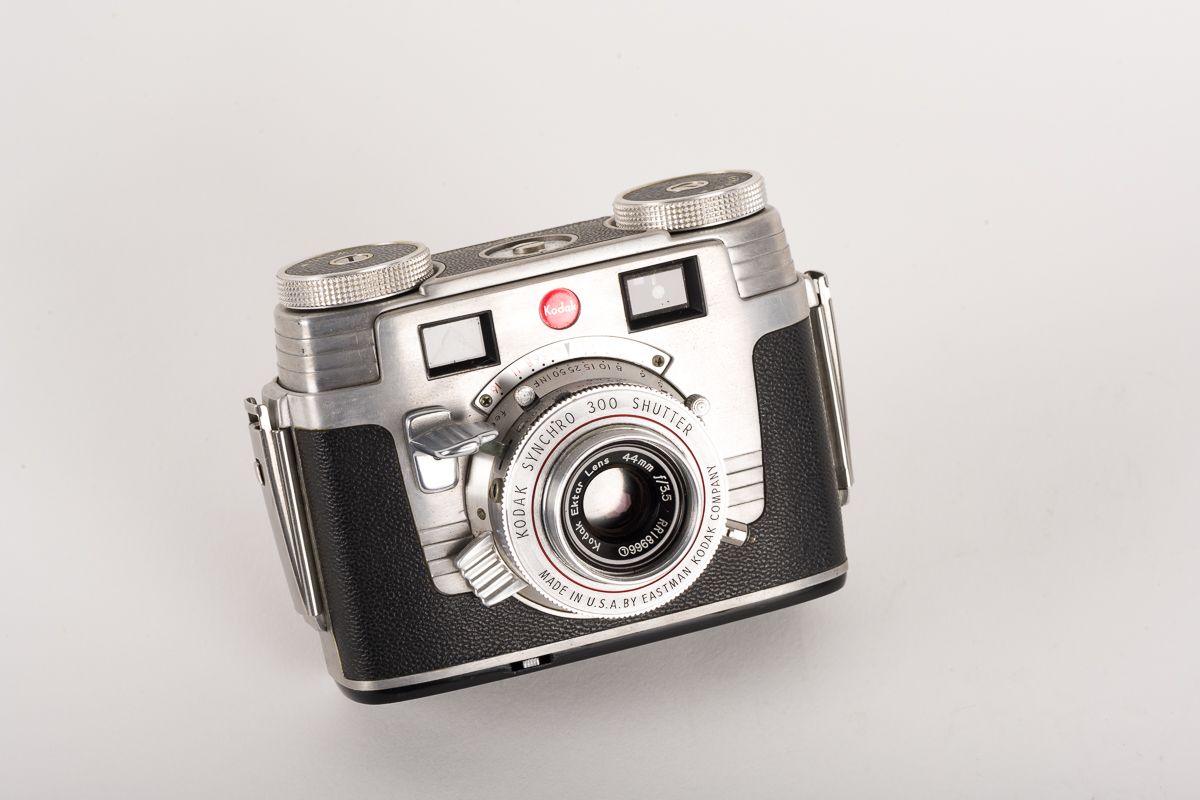
*click to enlarge images
About The Kodak Signet 35
Introduced in 1953, the Kodak Signet 35 was the first of a relatively small series of 35mm Signet cameras. Often considered the best looking, it was also the most expensive of the Signets. There’s speculation that the camera was originally developed for military use and, in fact, a military version exists.
It’s relatively compact given its solid construction. It has a functional rangefinder for focusing. Most of these that I come across are still working, so they are clearly quite reliable. They shoot standard 35mm film and have what is widely considered to be a good lens, at least for the time period it was introduced. This camera was competing with German cameras at the time which put it at a disadvantage given the extensive German history of making fantastic cameras. They’re still pretty affordable these days so you can readily get one, put some 35mm film in it, and shoot it like any other 35mm camera. One interesting aspect of this camera is the sliding exposure scale on the back used to help you easily figure out the correct exposure.
The Signet 35 was the successor to the Kodak 35 below.
Kodak 35
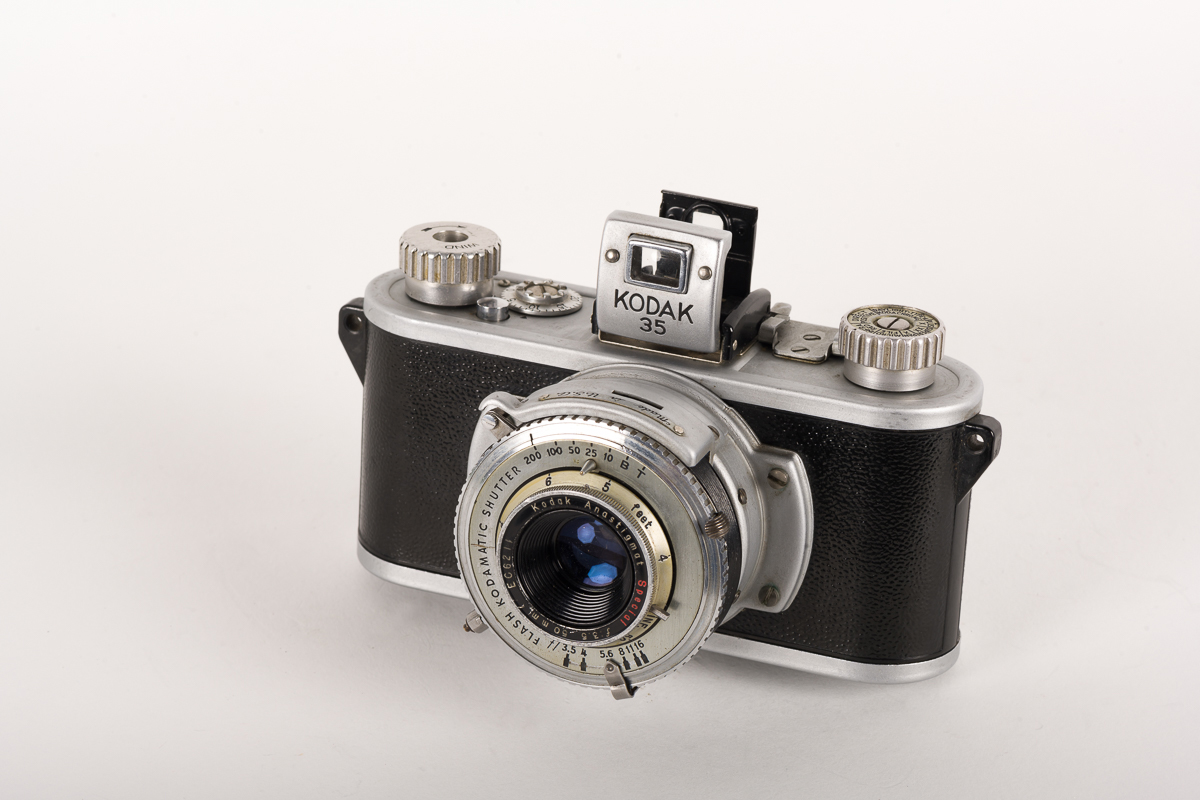
*click to enlarge images
About The Kodak 35
Released in 1938 with an impending war likely to interrupt supply, the Kodak 35 has the honor of being the first 35mm camera ever produced by Kodak in the United States. Previous 35mm models had been produced in Germany. By the time the Kodak 35 was made Kodak had already created the 35mm film cartridge we all know and love today. Those same cartridges are used in this camera, so it’s still readily usable.
It’s a pretty simple camera. It doesn’t even have a built in rangefinder; the pop up viewfinder is strictly for composition. To focus the lens you have to rely on having a decent sense of your subject’s distance from you and set the lens accordingly. Interestingly, it did have one feature that its successor, the Kodak Signet 35, did not. When you advanced the film it also cocked the shutter in the same motion. The Signet 35 requires you to manually cock the shutter.
There were several versions released and they can be difficult to differentiate. If you see one with black knobs on top then it was released pre-war. This particular model here was made in 1947/48. It would later be replaced by the Kodak 35 RF with a built in rangefinder.
Minox B
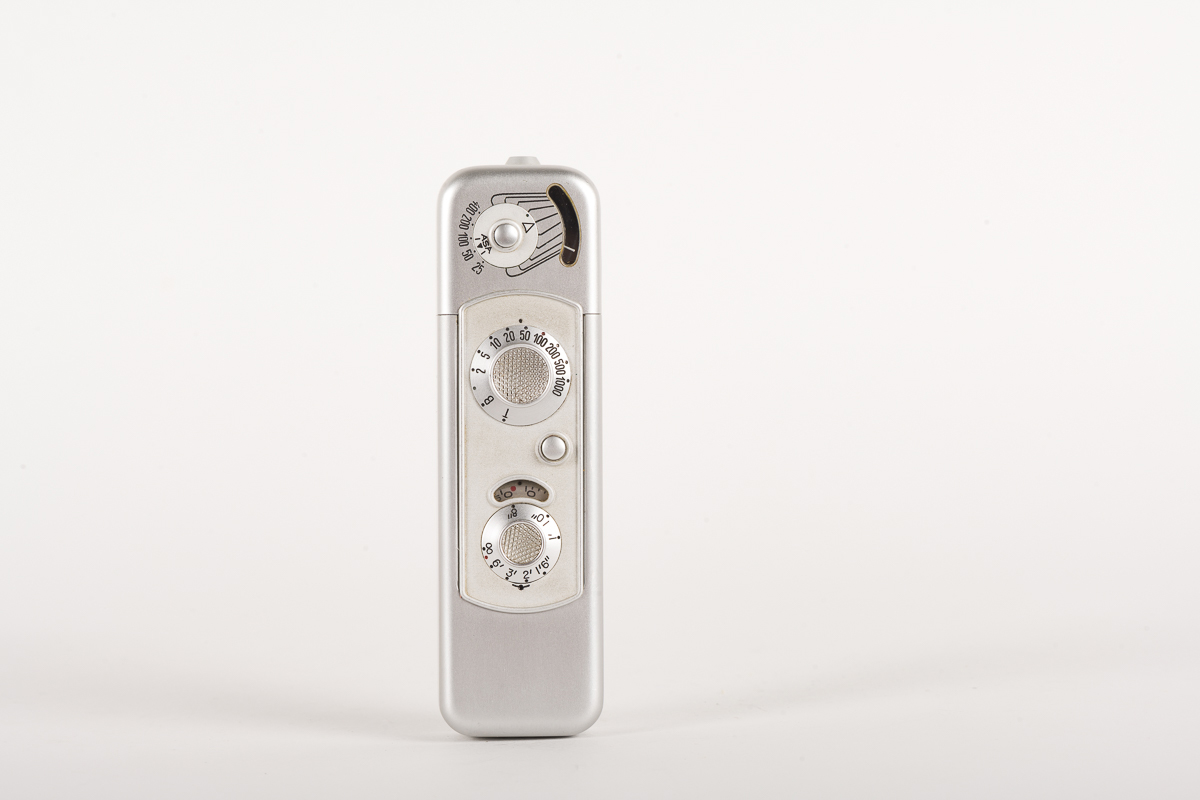
*click to enlarge images
About The Minox B
The name Minox is virtually synonymous with subminiature cameras. They were tiny, beautiful, luxury cameras which gained the reputation of being spy cameras. The Minox B, which is pictured here, was introduced in the late 1950s and was the first to have a built in light meter. That makes the camera a bit larger than others without a meter, but it’s still quite compact. There were many models released over the years following the same basic form factor (with the most beautiful perhaps being the Minox CLX). They take a specific Minox sized film which is different from most other subminiature cameras. You can even still buy film for them today. Minox would later go on to produce both 35mm and 110 film cameras. The company still exists today.
Kodak Brownie Starmeter
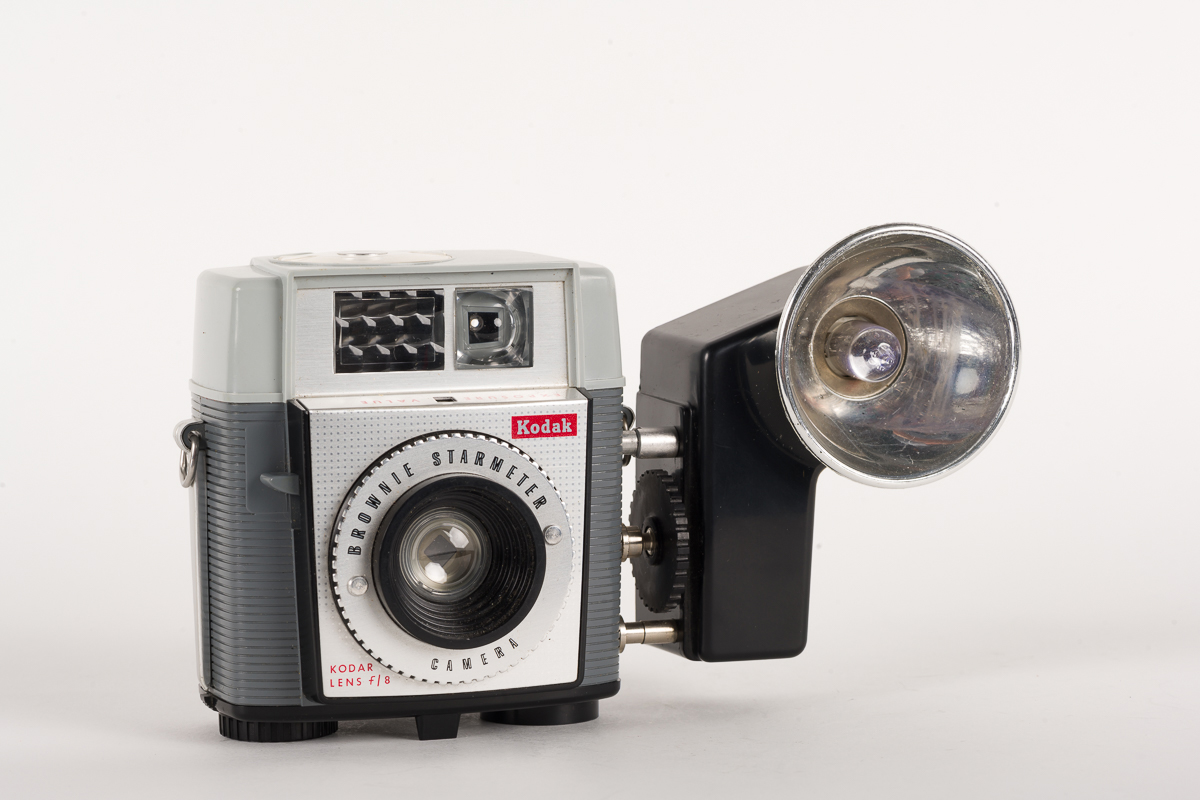
*click to enlarge images
About The Kodak Starmeter
Like the Starflash above, the Kodak Brownie Starmeter is yet another entry in the Kodak Brownie Star series. This one was made in the early to mid 1960s. With a built in selenium light meter it offers just the slightest bit more control than the Starmeter. You read the exposure on the top of the camera and then use that information to set the corresponding EV number with the one dial available around the lens. That dial only changes the diamond shaped aperture as the camera only has one shutter speed. It’s another cheap, abundant, classic Kodak camera that took countless family photos. You can still use it to relive your (or somebody’s) childhood with 127 film.
Polaroid 95
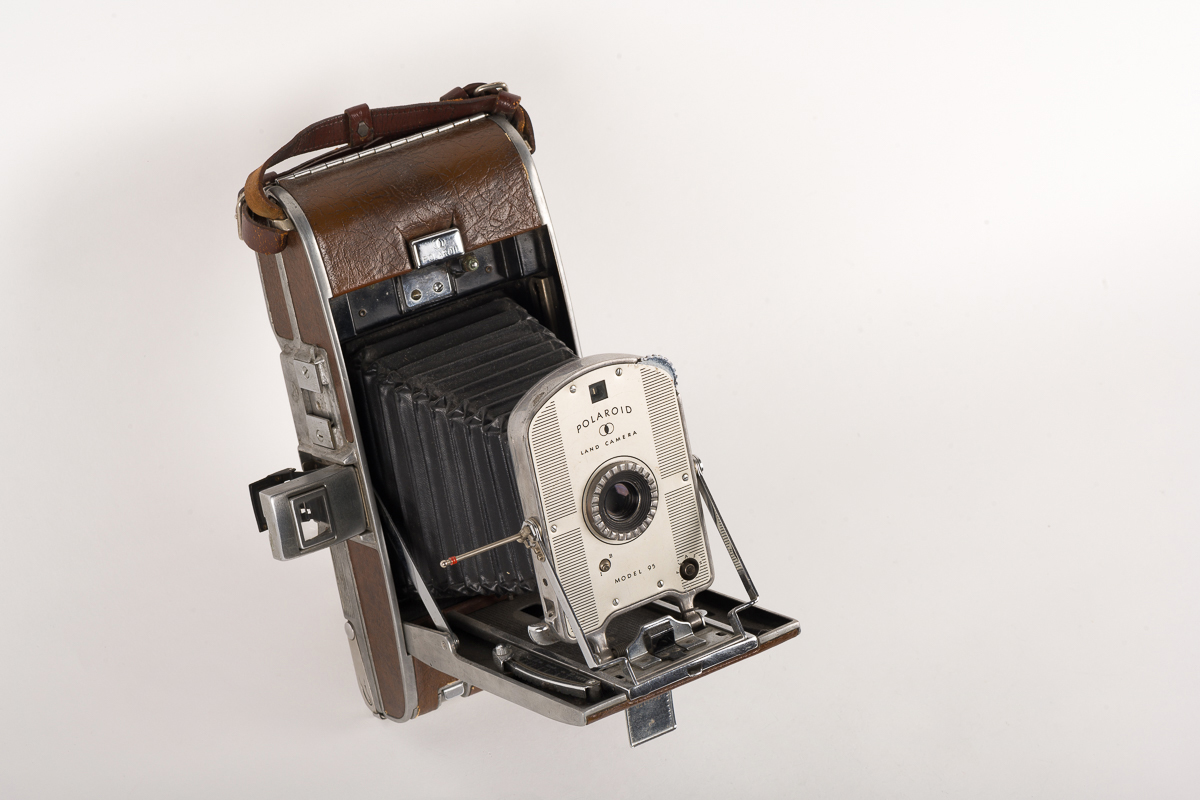
*click to enlarge images
About The Polaroid 95
First available in 1948, the Polaroid 95 was a landmark camera. It was the first practical instant camera Polaroid ever released. Can you imagine the world without instant film? It all started right here. Early Polaroids were called Land Cameras after their prolific creator Edwin Land.
They didn’t use the pack film that we’re used to today. They shot sepia pictures on roll film. The camera exposed the negative which was then pulled through rollers which smeared the necessary chemicals between the negative and a positive. After about a minute you opened the back of the camera and peeled away the negative. And just like that you had a print straight out of the camera, which was nothing short of revolutionary, from a photographic perspective.
These cameras took Polaroid 40 film which is now discontinued. Unfortunately there are no replacements for it. You can find some people offering services or instructions online for converting them to shoot 4×5 or pack film, though the 95 had an internally developed, not so great lens.
BONUS: GE PR-1 Exposure Meter
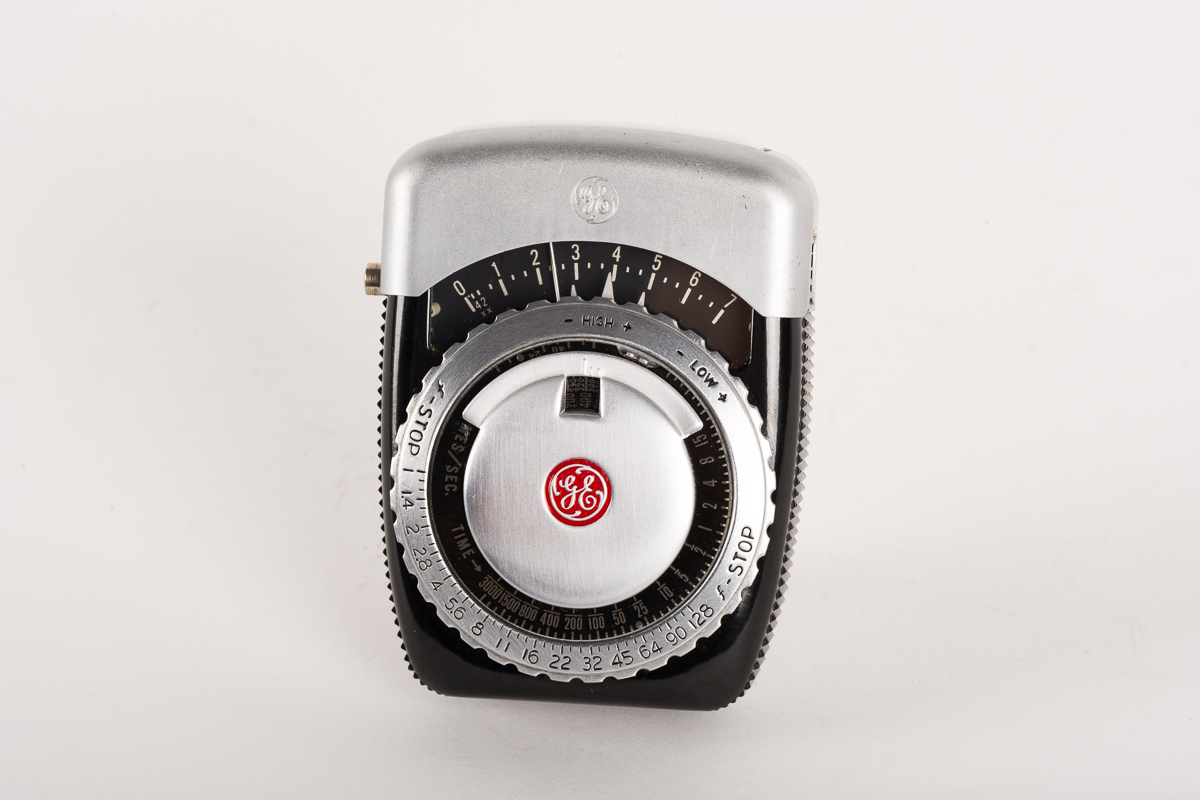
*click to enlarge images
About The GE PR-1 Meter
OK That’s Enough!
I have to stop somewhere or I’ll go on forever. There are so many beautiful cameras out there that I could never come close to touching on them all. And as they say, beauty is in the eye of the beholder, so for every camera out there is someone who thinks it deserves to be on this list (and it probably does). If old cameras interest you, and you haven’t already seen it, head over to part one of this post to see even more beautiful, vintage cameras. I hope this has introduced you to some cameras you’ve never seen before and perhaps even inspired you to give shooting with an old camera a try.
Do you think there’s something missing here? Did I get something wrong? Do you completely disagree with something I included in the list? I’d love to hear about it! Comment below or reach out to me directly and let me know what you think. And thanks for reading!

